Text
Future's Passed
Apropos of a conversation I was having with my mate Bashford about his design visions, I dug up a couple of ramblings about futures past, from the WIRE, one from 2015 and one from 2016. More on this theme to follow....

👇🏻
Model 500
Digital Solutions
Metroplex LP / CD / Download
Can it be that a musician doing exactly the same as he was doing 30 years ago still sounds futuristic? Because for large sections of this album, Juan Atkins is making music that, bar a few aspects of finessing on the mixdown, could have come from the same sessions as 1985's Model 500 electro track “Night Drive (Thru Babylon)”. Though he has latterly shown he's still happy experimenting – take 2012's intensely psychedelic remix of Psychic Ills for RVNG Intl. – here, he is returning to the roots of his craft, much like his co-producer here Mike Banks, another Detroit originator who seems similarly satisfied with outsider status and immune to demands for aesthetic progression. And for large sections, it still sounds not like a capitulation but like visionary sonic fiction, and not in a kitschy way either.
When, in 1990, the the film critic Philip French wrote that "nothing dates the past like its impressions of the future,” it was taken as a truism – and indeed by that year Atkins's early music was already starting to sound as archaic as Dr. Who in comparison to what was happening around it. I was in my mid-teens then, and to me electro as such meant the music of kids' TV soundbeds, or body-poppers in shopping arcades. With its robot voices and simple melodic hooks it sounded cute and silly, like a primitive prototype for the British rave music, the more serious-seeming and compositionally complex techno of Derrick May, or the more martial electro of Underground Resistance. The same applied when I discovered Kraftwerk and YMO soon after: in the white heat of the rave moment, they just sounded a bit rinky-dink, a bit novelty.
It took quite some time to start to understand the music's appeal. As I absorbed more of what came before and after those records – P-Funk and Throbbing Gristle, Drexciya and Wax Doctor – their place and their value became clearer. But I'd even go so far as to say that it wasn't until reading Kodwo Eshun's poetic analysis of “Night Drive” in More Brilliant than the Sun in 1998 and re-listening that I really felt the power of that track's modernity: the descriptions of “bachelormachines... rearing up on their hindquarters” and the voice as “a subliminal shadow that creeps along the skin, stalks you with its lightbreath” bringing it to life as a synaesthesic futureworld vision, not simply as a set of musical motifs or references. And once heard, that cyborg modernity couldn't be unheard: that track remains as startlingly capable of rewiring and rebooting the imagination now as ever. At that moment it became glaringly clear that the shock of the new doesn't actually have to be new. To use another popular statement, generally attributed to William Gibson, “the future's already here, it's just unevenly distributed”: and sometimes that future has to be winkled out from where it's folded into the past and present.
Since then, Detroit's 1980s electro has only become more contemporary as it is folded back in to the cultural fabric again and again from different directions: via the Glasgow hybrids spawned by the Club 69 and Rubadub hub via Rustie and the Numbers crew; via the ominpresence in 21st century culture of Daft Punk; via the electro diaspora of Miami bass, crunk, juke, jit, snap, baile funk, kuduro, hyphy, trap, club; via succeeding generations discovering the endless mysteries of Drexciya. Which leads us to a point where Atkins can deliver an album – his first in 16 years – that contains precisely no innovation, yet it can still sound like a distillation of modern elements from right across today's music, and like an elegant representation of a fast-changing technological society to boot.
Unlike Mind and Body, the last Model 500 album from 1999, which diverted into drum'n'bass and hip hop, everything from the classic Atkins sound is present and correct on every track: the robotic voices flatly intoning things about technology or consumer society (the Teutonic-sounding one on the title track being the most simultaneously hilarious and deathly serious example), the angelic vocoder voices in the background, the laser zaps and squacks as percussion, the syncopated 808 kickdrum subsonic foundation, the bulbous and shiny synth notes playing layered funk melodies in interplay with more discordant tone clusters. There are zippy tempos as on the opener “Control”, digital slow jams like “Electric Night” and “Encounter”, and one track that flicks between the two: “The Groove”, which provides the only obviously non-computerised sound of the album in the elegant prog rock guitar soloing in its half-speed sections. Rhythmically, even on the couple of tracks with a four-to-the-floor kick, it is always electro – which in fact means that it is always essentially funk.
It works not only because of its resonances in more recent musicians' work. It works because funk is still relevant to the proportions of the human body, to the speeds at which our limbs can move relative to one another. It works because a subsonic kickdrum still makes your innards tingle as it did whenever you first heard it. But it also works because that unevenly distributed future still needs visions like this for us to find it and parse it. It felt for a little while like the snowblindness of everything-available-all-at-once bitstorm information society meant that the future was on hold, and we were just immersed the infinite cultural past, and that the significance of different cultural movements was being eroded into a slew of undifferentiated nostalgia and marketing algorithm fodder. But as we barrel ever onward, precipitous inequalities and mind-frying volumes of information and all, it turns out that past visions of the future aren't so very dated at all.
Gibson, McLuhan and the Detroit pioneers favourite Toffler can all look a bit silly, a bit naïve and jerry-rigged now – but they all can also be startlingly relevant, and you can still discover the shock of the new in them as in Atkins's music. In a time of cyborgs, drones, driverless cars and the infinite hall of mirrors of surveillance and social media, the future-shock thrill of taking a night drive through Babylon can be as bracing and ever, and so can the musical techniques for understanding what you see on that drive that were honed so long ago. While others might use vastly more complex computing power to try and musically interface with the present and future on a nano level, in fact that the simpler, clunkier, funkier patterns mapped out here might just have something even more profound to say about the fundamental relationships between us and our technological world, if you can feel and participate in their vision.
---
Various Artists
Star Wars Headspace
Hollywood Records CD / Download
Space Dimension Controller
Orange Melamine
Ninja Tune 2LP / CD / Download
Bwana
Capsule’s Pride
LuckyMe LP / Download
“If we view it as a kind of sociology of the future, rather than as literature,” wrote Alvin Toffler in his 1970 book Future Shock, “science fiction has immense value as a mind-stretching force for the creation of the habit of anticipation. Our children should be studying [it], not because these writers can tell them about rocket ships and time machines but, more important, because they can lead young minds through an imaginative exploration of the jungle of political, social, psychological, and ethical issues that will confront these children as adults.”
As is well documented – most vividly in Kodwo Eshun's conception of “sonic fiction” – music, and especially club music, can be science fiction too. Each new generation encounters the musical environment as technological-imaginative space outside the quotidian thanks to the visual/social/chemical/durational/sonic assemblage of the dancefloor and associated spaces – and that too can lead minds through exploration of past, present and possible futures. Of course there are waves and shifts in how styles and techniques facilitate this, but none completely replaces those before: past sonic fictions – past futures – retain functional value and are continually re-incorporated into the circulating library of usable forms. Always, too, from the Mothership to Metalheadz to Mumdance , there are explicit sci-fi signifiers woven into the sound and vision.
This is done in the most glaring possible way in the Rick Rubin-compiled Star Wars Headspace album. Sound design and dialogue from the Star Wars franchise are sampled liberally through 15 tracks that span a large chunk of what currently works for North American ravers, from the crassest martial trap-rap-derived beats through thumping house to subtler and more psychedelically dense grooves by Flying Lotus, Shlohmo and Bonobo. There's a conspicuous lack of the Ed Banger / dubstep-derived hyper-compressed aggro you'd have expected even two or three years ago: mainstream EDM is getting funkier and more genial. Combined with the thickly-layered chirps, whistles, animal grunts and the jaunty kitsch of the dialogue snippets, this creates a deliriously infantile playhouse of sound.
Star Wars was never about any future: it set “long ago”, and built on Saturday matinee westerns, Buck Rodgers and George Lucas's “Hero With a Thousand Faces”-derived belief in eternal narrative archetypes. And its sounds as much as its iconography have achieved a depth and breadth of penetration into the collective unconscious that goes way beyond modernism or retro: unless you have lived in extraordinary isolation for decades, noises like the chirrups of the R2-D2 droid which form motifs in this record are like Proustian keys to the fantastical. So the most fratboy-friendly rhythms here, from GTA and Baauer, take on a psychedelically transporting quality just as much as do the humid complexities of FlyLo; in this context Rustie's typically deranged “EWOK PUMPP” feels absolutely at home, even emblematic of the project. And among all this Rubin himself makes a deliciously naïve attempt at zippy techno in “NR-G7”, against all odds ending up sounding like Ozric Tentacles's rave offshoot Eat Static. It might be silly, but this album is much more than a cynical franchise tie-in: it's a explicit, deliberate opening up of 2016's most commercial rave music to mythic space.
Young Northern Irish producer Space Dimension Controller, as you'd probably guess from the name, is well versed in musical sci-fi, with Parliament, Drexciya, Jonzun Crew as standard reference points. His lo-fi Orange Melamine side-project, though, is about something far more esoteric. If the Star Wars album reaches to a collective mythic space shared by billions through decades, Orange Melamine opens up a tiny trapdoor to a cultish communal dreamworld around the turn of the millennium where internet and music culture first began to seriously create their own forms. It's the sound of third-generation copies of animes and UFO conspiracy VHS tapes (present here as sampled dialogue) arriving in the post after newsgroup discussions, of swapping obscurities by Team Doyobi, Req, Oval, MDK with strangers across the world on Audiogalaxy, of lo-res RealPlayer rips, of falling down rabbitholes on alt.culture messageboards. The braindance, illbient, outsider rap and indietronica evoked here was already humming with the broken rave nostalgia that would later be codified by Burial and hauntological thinking – as well as the shimmering dissipated data global collages of cloud rap, vaporwave and other waves of digital culture to come. Its reference points might be hyperspecific, but this too opens out into a wide imaginative world.
In the interzone between these two is Toronto techno producer Bwana's 43-minute love letter to Akira, the 1988 cyberpunk anime of psychic bikers and apocalyptic visions set in 2019 “Neo-Tokyo”. This movie sits in the midpoint between Orange Melamine's occulted cultural reference points and the near-universality of Star Wars: within club and rave culture, it's such a late-night staple that its sounds and rhythms – and the strange cadences of American actors dubbing their lines to Japanese speech rhythms – are woven into the very neurons of generations by repetition within the nightlife ritual. On this album which interpolates film dialogue and music, even the sound of the characters' names – Kay, Kaneda, Tetsuo, Akira – become incantations of, and ways into, the movie's fever-dream future.
The music, which is realised in the highest definition, crisper and glossier even than the big-money EDM of the Star Warsalbum, has ripples of Rimini and Dusseldorf of the 1970s, Hollywood of the 1980s, London of the 2000s, Atlanta of the 2010s, but mostly it is just techno: not exactly ahistorical or from a non-place, but certainly cut loose from spatial-temporal specifics. Techno has never been about the future, it always pooled together futures past – P-Funk, Blade Runner, Toffler, Kraftwerk – to build a generalised future dreamtime into its sound: that Tofflerian “habit of anticipation” coded as rhythmic psychedelia. Techno as expressed on this album is no more retro or dated than watching Akira after a night out is rendered obsolete by Metal Gear Solid. We are now in Toffler's future – deep into the uncanny valley of laser surgery, virtual reality, gene editing, drones, machine learning, mind reading, microsecond-sensitive global trading, face transplants, our neighbouring planet being populated by robots, meme culture, Anonymous, Kanye West – and occasionally it's desirable, even essential, to revisit those old tools and “mind-stretching forces”.
#scifi#science fiction#electronic music#electronica#funk#electro#techno#edm#dubstep#house music#anime
2 notes
·
View notes
Text
Albums of 2023 part 4
RIGHT where were we? Continuing from part 3... Let's get through this before January is out shall we? Last stretch... Listening to this 10/10 LP I realised that the only real peer Kristin Hersh has is J Mascis: always different but always the same, always tapped into the eternal flow of weird, sad, America, always writing, playing and singing brilliantly year-in-year-out.

😭😭😭😭😭😭😭😭😭😭😭😭😭😭😭😭😭😭😭😭😭😭😭😭😭😭😭😭😭😭😭😭😭😭😭😭😭😭😭😭😭😭😭😭😭😭😭😭😭😭😭😭😭😭😭😭😭😭😭😭😭😭😭😭😭😭😭😭😭😭😭😭😭😭😭😭😭😭😭😭😭😭😭😭😭😭😭😭😭😭😭😭😭😭😭😭😭😭😭😭😭😭😭😭😭😭😭😭😭😭😭😭😭😭😭😭😭😭😭😭😭😭😭😭😭😭😭😭😭😭😭😭😭😭😭😭😭😭😭😭😭😭😭😭😭😭😭😭😭😭😭😭😭😭😭😭😭😭😭😭😭😭😭😭😭😭😭😭😭😭😭😭😭😭😭😭😭😭😭😭😭😭😭😭😭😭😭😭😭😭😭😭😭😭😭😭😭😭😭😭😭😭😭😭😭😭😭😭😭😭😭😭😭😭😭😭😭😭😭😭😭😭😭😭😭😭😭😭😭😭you can hear Ryuichi Sakamoto breathing on this 😭😭😭😭😭😭😭😭😭😭😭😭😭😭😭😭😭😭😭😭😭😭😭😭😭😭😭😭😭😭😭😭😭😭😭😭😭😭😭😭😭😭😭😭😭😭😭😭😭😭😭😭😭😭😭😭😭😭😭😭😭😭😭😭😭😭😭😭😭😭
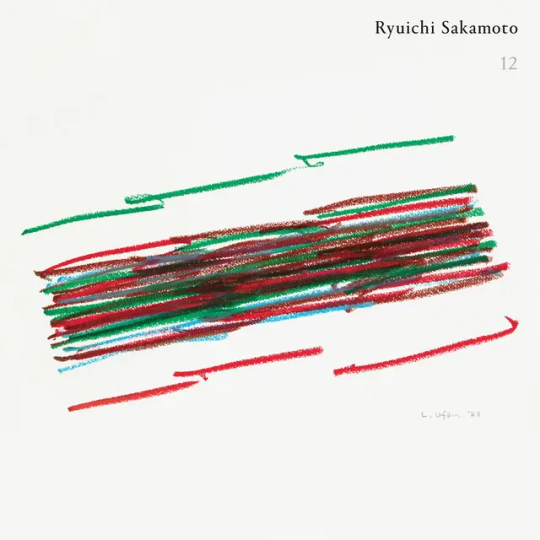
Talking of always different always the same, Slowdive were built to age gracefully weren't they? Even so, though, it's pretty startling how they continue to do work right up there with their very best all these years later. Proper safety blanket of an LP this.
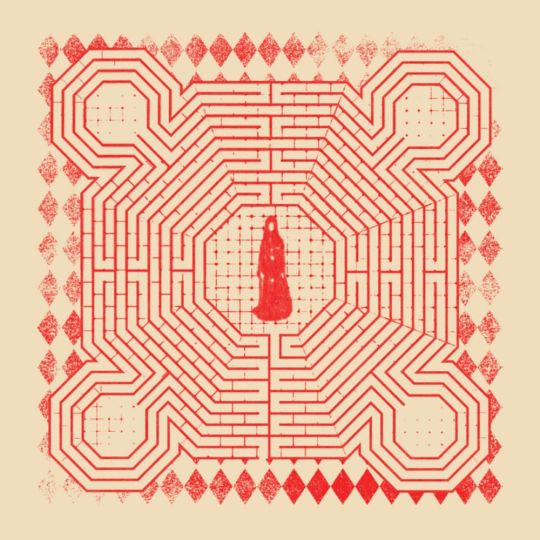
In a golden age for soul/R&B, Mahalia is royalty. She just keeps growing as an artist and this is easily her best album yet - perfectly hits that sweet spot between R&B, neo-soul and pop and just sounds *classic* from head to toe. World class.

I would watch the absolute shit out of the Tarkovskyan meditation on scale and emptiness that this amazing instrumental album by Vince Clarke would be the soundtrack for. The void staring back at you! ⚫️👀⚫️

Kerfuffle aside, Róisín was firing on all cylinders here. This doesn't have the deadly focus of Róisín Machine (what could?) - rather, like Hairless Toys and Take Her up to Monto, it takes time to unpack - but it's a sprawling wonderland of a record, brilliantly structured, and a fine addition to her immense discography. Interviewed her (pre kerfuffle) for the Substack...

It baffles me how consistently Loraine James is able to sonically express complex emotions that don't have names - and how she's able to use all the tropes of "cerebral" music, but smash the ivory tower and make it feel like it has purpose out in the world and is just a natural way to communicate.

Before, on her EPs, Yaeji built her tunes on house, hip hop or other recognisable grooves - but on her debut album, it's an explosion of everything. The confidence to transcend the myriad influences and create something so pop, so weird, and so singular is incredible.

Here's a weird one I only just came across as the year was ending. Mary Lovett, straight outta Norfolk, makes more unique, grown-up electropop: but this is mystical, insinuating, mischievous and very peculiar indeed. Feels like a subversive cabaret of the mind.
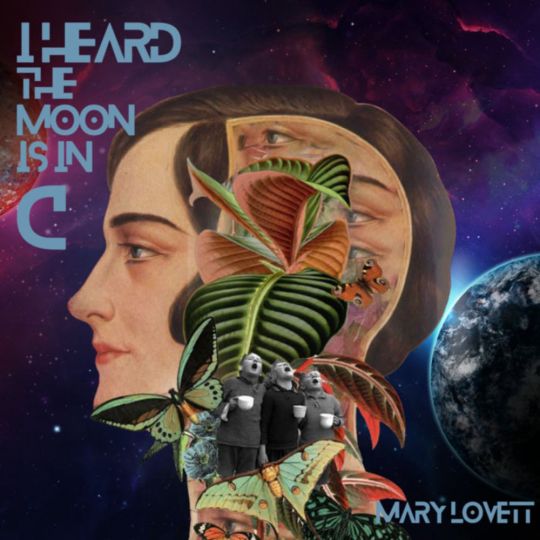
While we're on peculiar, grown-up, mystical Norfolk electropop - ah ok maybe more gothy postpunk with a bit of rave thrown in - Maria Uzor smashed it out the park with this. Makes me want to do really jerky interpretive dance in a room full of misfits - and made us want to shoot/interview her for the Substack!
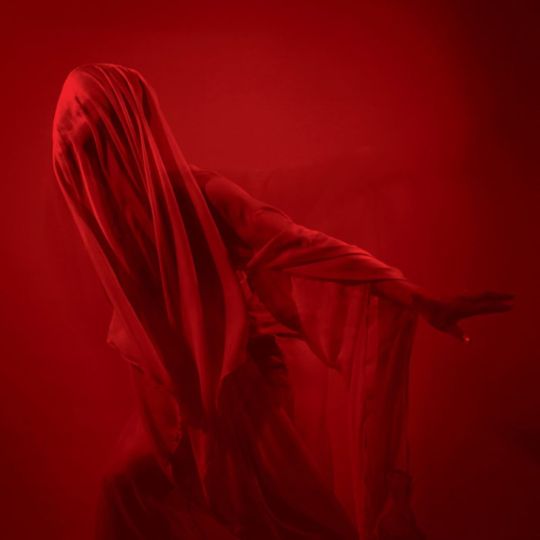
Another artist who just grows with each release - Nabihah Iqbal hit new levels here. It's so deluxe, so poetic, so morning after the rave, really tapped into deep historical streams of New Order, Pet Shop Boys, Slowdive and co, but resolutely not retro...
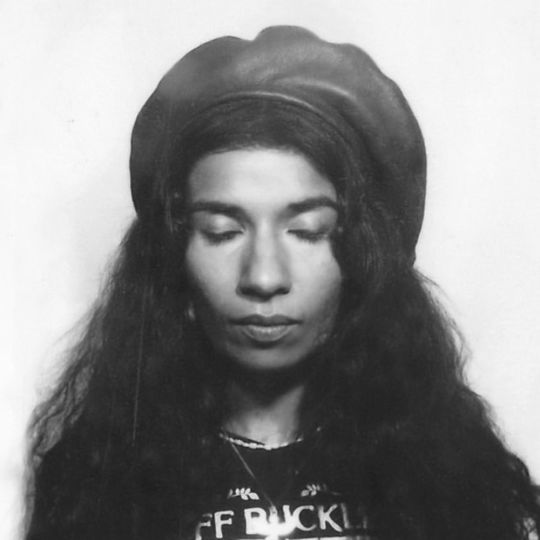
I have listened to this Yazmin Lacey record SO MANY TIMES, it's just vibes upon vibes upon vibes, also I keep playing fantasy football with dream remixers for each song, also she radiated charisma and wit on stage at We Out Here. A star.
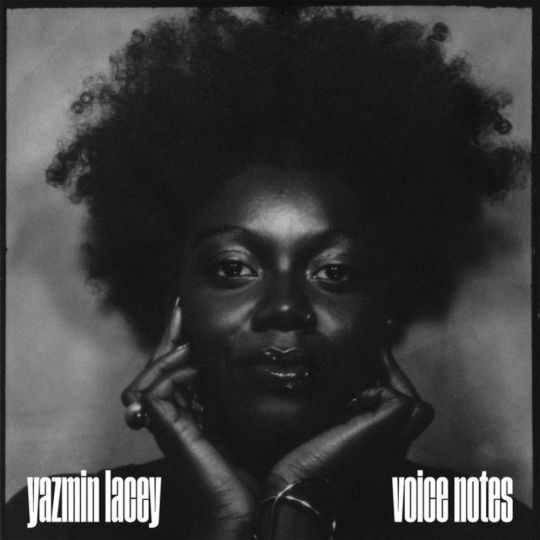
Amazing voice, amazing poetry, witty af ("dickhead blues!") yet stab you in the heart serious, ancient yet modern, lo-fi yet lavish, INCREDIBLE arrangements, absolutely staggering stuff from Kara Jackson.
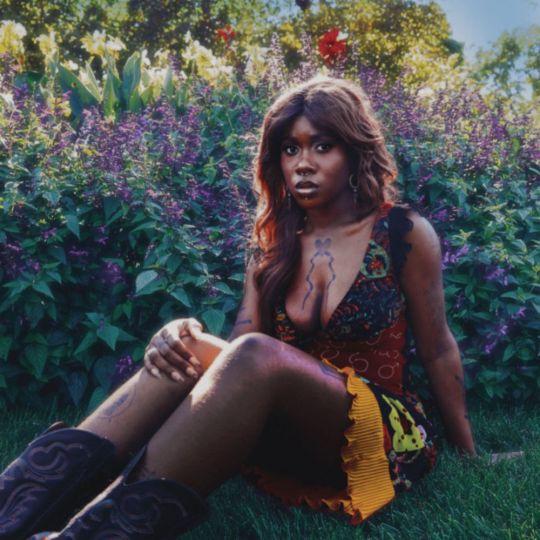
This is both a deep, literate, endlessly fascinating songwriter LP that you can pore over endlessly, and taps into the very purest essences of house music - what more could you want? Interesting political / environmental / regional backstory too. AMCA absolutely rule.
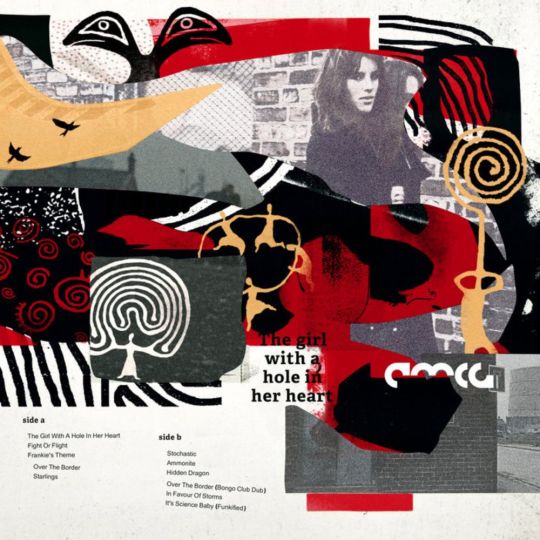
In a year of phoned-in, arbitrarily-sequenced rap albums, CasIsDead's Famous Last Words stood out like a skinned thumb: this is an A-L-B-U-M album - with narrative, leitmotifs, a view on life that's the definition of "unflinching", gorgeous music, wordplay for days, and a finale that'll make your heart fall out... just stunning.
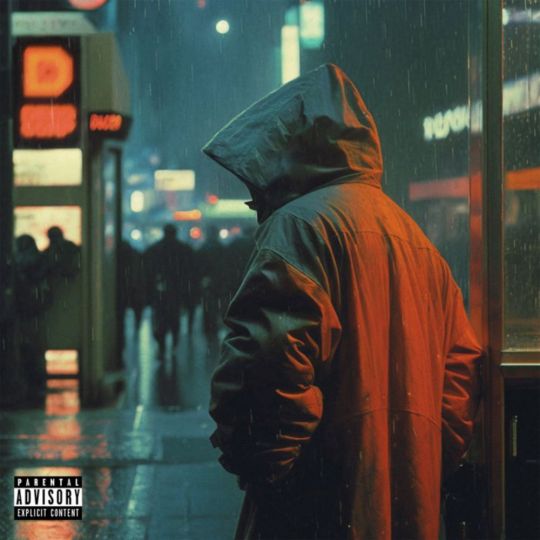
Almost forgot this was 2023 as Tuulikki gave me the LP at a festival in Oct 2022 - and I’ve had it on rotation ever since including in DJ sets. Modernist folk-classical composition for accordion +++ - really special and gets under your skin.
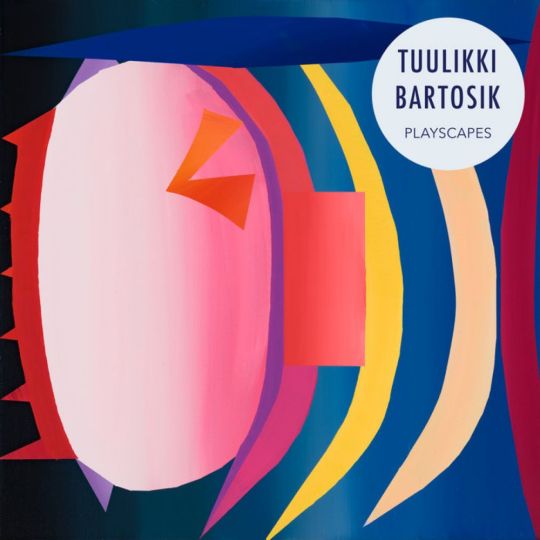
In a year riddled with great grown-up electropop / dance pop albums, Hifi Sean and David McAlmont were kings. This is what bittersweet accumulated life experience sounds like and it's WONDERFUL. Proud to have interviewed them both - Sean here / David here - for the Substack about it, and both were amazing value.

TWO stunning meditative records from Beirut coming up, both epitomes of Soft Music for Hard Times. First Mayssa Jallad on the new Six Of Swords label with an amazing dark but weightless singer-songwriter album - imagine a Lebanese Windy & Carl? A real experience of taking a step into someone else's dream record, this.

And then puppeteer (!!) Yara Asmar with mostly instrumental soundscapes which like the Jallad album exist in an isolationist dream space and are impossibly sad and lovely with glimmers of forlorn hope, laments for a broken world etc etc, just wonderful stuff. Also the THIRD appearance for Brighton's Hive Mind label in this list.

Another very grown up record! Ever-thoughtful Scrimshire was clearly in brooding mode in the studio, lots of darkness to this - but it's gorgeous too, and you know what, it's up there with Yussef Dayes as far as UK jazz versatility and ambition goes!

AND FINALLY!!!! 32 minutes of - yes - PURE PLEASURE. So so good, and so needed in bleak times, to hear Janelle Monae cutting loose with total fun and confidence like this, I just LOVE it.
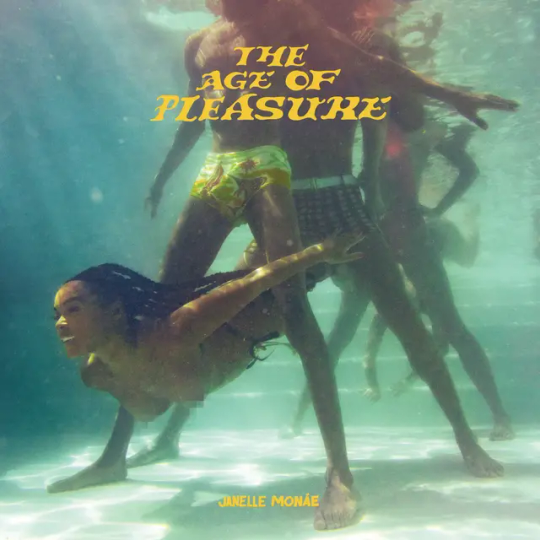
That's it... 95 records. All have given me joy in the last year, and I hope some of them do you too.
#music#ambient#electronica#rave#acid house#electropop#dance pop#funk#soul#reggae#jazz#estonia#lebanon#rap#grime#singer-songwriter#club music#shoegaze#indie#idm
2 notes
·
View notes
Text
Albums of 2023 part 3
And - continued from part 2 - some more! This one does what it says on the tin. Levon Vincent knows the old chestnut "dancing about architecture" is accidentally profound: this is 11 pieces of holy four dimensional architecture exquisitely designed for your body to move through.

It's been a great year for old school BRAINDANCE, in no small part thanks to Mighty Force records releasing thick and fast, and this from Kams, straight out of Beckenham, is the best - just warm-hearted, melodic, acidic, danceable, classic electronica.

My old mucker Culshaw is a scholar, a gent, an adventurer, and on the sly a great musician. This comeback to the studio is MAGIC - global and spiritual and incidentally Balearic in a Jose Padilla sense - but its connections are based on highest common factors, never dully fusioneering.

Just fries my mind that Boris seem to get creatively hungrier and angrier with every passing year. This collab brings in all sorts - goth, thrash, synthwave - but what I really love is the unironic POWER METAL energy. Music to be struck by lightning to.

It's been an incredible year for electropop - and this album from producer turned singer songwriter Avalon Emerson is the *sweetest* of the crop, lighter than air, a gentle digital dream, but with surreptitious emotional heft. Reminds me a little bit of millennium era Morr Music, Tarwater etc? Must listen as a whole: it draws you in and in....

Even heavier than the Boris, and the record that made me fall in love with grindcore all over again - had to order the vinyl even given transatlantic premium. Nepalese band in New York Chepang TAKE. NO. PRISONERS. HUURUUUURURRGGHGHHH.

I was NOT expecting this from Anhoni - but I'm a sucker for Muscle Shoals style country-soul grooves, and though they risk getting "a bit Jools Holland", here they're delivered with total assurance plus the bleakness of the lyrics, fierceness of delivery and a few noises moments all adds some serious edge.

More electropop - this one from Jessy Lanza is not a million miles from the Avalon Emerson in its pristine futurist sound, but it's a bit spikier, eerier, like she is setting puzzles for you.

My most played record of the year. Like the Culshaw, a bit Cafe Del Mar in the most urbane possible sense - Sissoko & co's blend of jazz, classical, W African & European folk is done with unbelievable poise and emotion and is completely addictive.

This has been all-conquering this year and rightly so. It's not just the fearsome doom bits, it's the straightforward folk that's great: Lankum remind us of dreadful, beautiful paradoxes of being human that don't really change through the centuries.

Paul Simon says this was written in dreams, and it really sounds like it. Genuinely transporting, surreal, gorgeous and - I have to say it - roughly 10,000,000 times more interesting than anything Bob Dylan has done this century.

Completely UN-deconstructed trance... the way Romy taps into the melancholy of the most globe-conquering of 90s pop dance is something quite special and will serve as a real cynicism test... go on, let it twang your heartstrings!

I've kind of idly admired King Krule's music from a distance previously but that changed last year - he really is something special eh? Way more than the sum of influences, and a proper world-builder.

One of many where I missed the promo at the time (sorry PRs) but then discovered it via my sp****y recommends. Just beautiful post-classical, post-ambient musing music from Audrey Carmes that sounds like austere but lovely perfumes and crisp clean cotton.
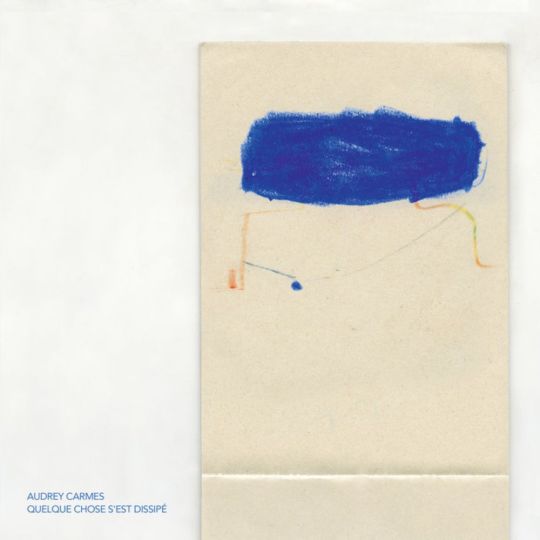
Of course death is at the heart of Depeche Mode's music so how tragic but appropriate that it took Fletch's death to turbocharge them creatively. This is like a telescoping together of their whole history - but also still in love with new sounds...

More death, more darkness, with Amy Winehouse serving as a dark angel muse drawing together and crystallising the ambient, abstract and dream cabaret influences Kevin Martin has been incubating in his solo KRM albums since 2019. Crushingly sad and great.

Espec after seeing him rock it in the morning at We Out Here, I do feel like Joshua Idehen is in danger of becoming a late-blooming star, you know. Explicitly connecting David Byrne, Mike Skinner, Maxi Jazz and a finger-jabbing Nigerian preacher, he ROCKS.
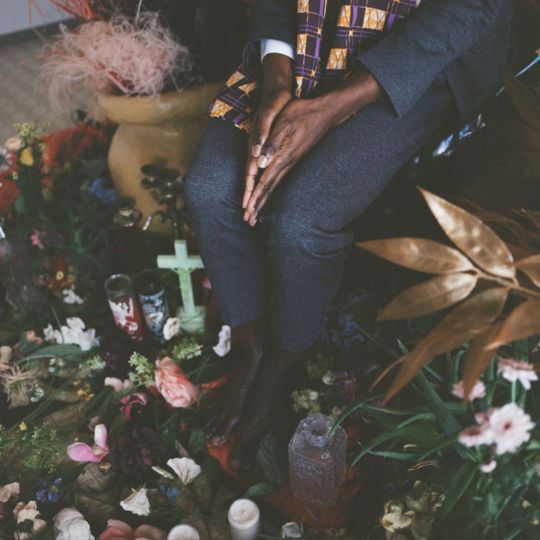
Yes, Yussef Dayes really is all that and a packed of Pickled Onion Space Raiders. Brit jazz just seems to have been in a consistent triumphant state these last five years or so and there's no sign of it stopping being that way with albums like this still coming.

Ben Howard is an artist who'd completely passed me by despite being really quite big - but again the sp****y algorithm brought me this and it's really amazing, thought provoking, grown up pop. I *instantly* guessed it was Bullion on production too, no lie. ❤️
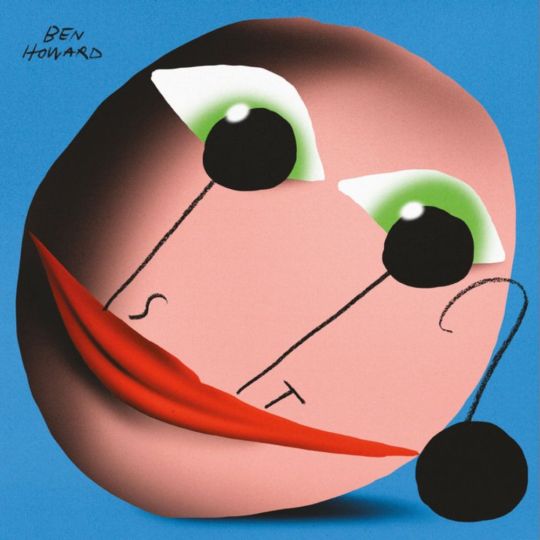
I've said for a long time that "mumble rap" has deep atavistic echoes of the blues and psychedelia - and here's the mumbler in chief Lil Yachty joining the dots back through the decades. Funkadelic, Hendrix, Beck, Outkast, BUTTHOLE SURFERS? Yeah it's all here. Not saying it's one those levels, but it's great and

Holy shit is Dot Allison on a roll or what? This is effectively 2021's Heart Shaped Scars growing in all directions: bigger, grander, more cosmic, even more beautiful. The partnership with Hannah Peel as arranger is front and centre and works incredibly.

Alright it's not as unique as Bad Bunny's 2022 masterpiece Un Verano Sin Ti - this is more trap, less overtly "Latin" - but it's really, really good. Sometimes not knowing the language can emphasise the emotion in the sound: the blues in the trap, the Spanish derived "tristeza"...

My fave Villalobos moments are often him working his wonky magic on "real" instruments and songs (see his Tony Allen / ECM reworks) so a whole album of him tweaking A Mountain Of One's Balearic soft rock is a real treat. Gets progressively "more Ricardo" as it goes on.

I love how Young Fathers have become such a beacon of what a "big festival band" CAN be when it broadens its influences out and grooves a bit. This album is such a big step up for them, and I really hope they keep this momentum because it's BIG FUN.
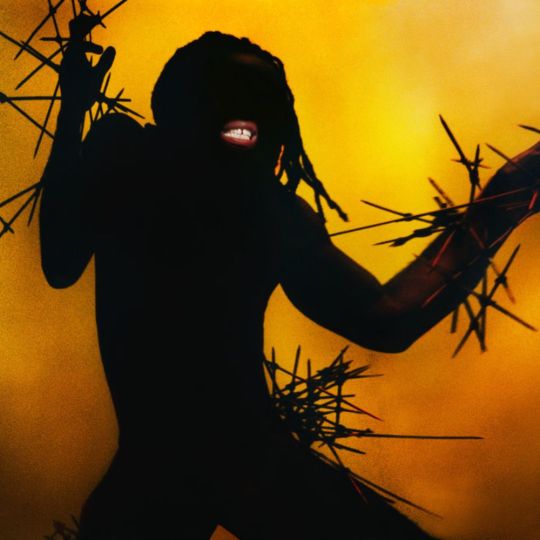
And talking of Scots "big festival bands" with diverse influences pushing the envelope and having fun with loading in more pop, dance, rap etc, The Djangos really went to town on this one and I was surprised not to see it getting more hype. A proper weird and wonderful party of an album.

Okayyyyyyyy last part is here, get stuck in!
#music#electronica#rave#acid house#psychedelia#jazz#rap#indie#balearic#albums of the year#alt pop#electropop#folktronica#trap#latin trap#soul#metal#grindcore#techno#braindance#power metal#synthpop#trance
2 notes
·
View notes
Text
Albums of 2023 part 2
And so, on from part 1, we continue. This is more dreamy synth-dub that sits perfectly next to the Harrow album: Richard Norris is another artist with an extraordinarily long and illustrious career but who also has never lost the exploratory urge and total delight in sonic finesse.
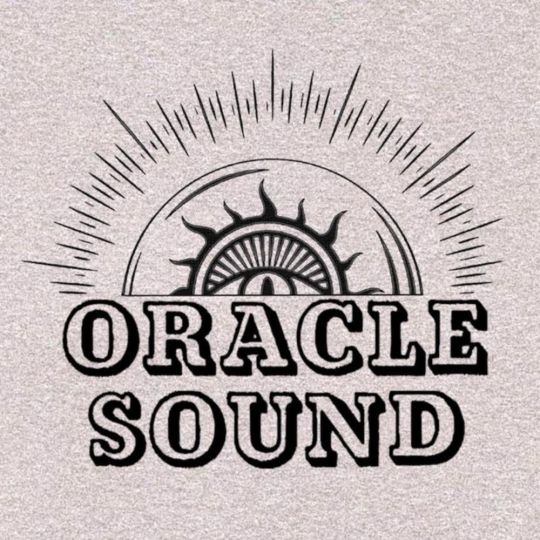
Honestly Uruguayan-in-Ireland Lila Tirando a Violeta is right up there with the very best of the "deconstructed club" generation - dark, gothic, complex, VERY WEIRD - and this collab with Berliner Sin Maldita is up there with her best. It's really, REALLY intense!
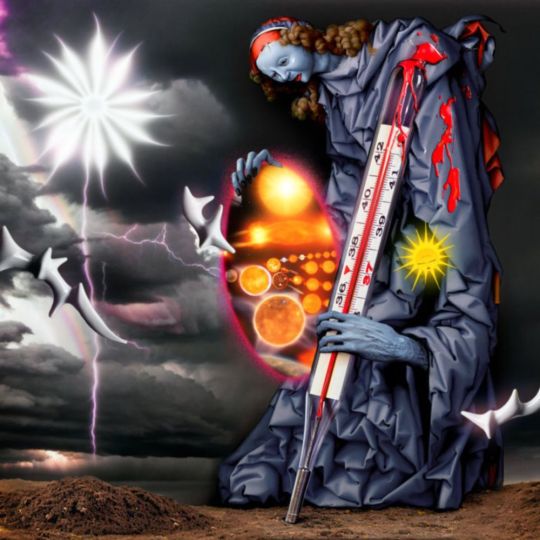
Just impossibly beautiful elegies from ambient harpist Mary Lattimore which builds towards the final track collaboration with Slowdive's Rachel Goswell that is so lovely it will single handedly bring back swooning as a popular pastime.

Officially an EP but there's enough here to cement Nia Archives's place as a heavyweight - add "Off Wiv Ya Headz" and that Jorja Smith remix, and she's had a humdinger of a 2023....

Saw some discourse suggesting that Burna Boy is resting on his laurels here, but I don't hear it. Maybe it's the fact that the cover looks dashed-off? But musically, this bangs: it expertly joins so many dots but keeps his voice and personality right at the heart of it.

I mean come on there was no way a collab between Earl Sweatshirt and The Alchemist was going to be anything but good, right? Just purest essence of deep and dreamy stoner hip hop. Yet another small (27min) but beautifully formed album - definitely a trend there.

Feels kind of (literally) sacrilegious to say I prefer Cleo Sol's more personal, less scriptural records (e.g. Rose in the Dark) - and this is, top to bottom, a gospel album - but the conviction to her performance and the whole realisation of it here is still really magical.

From Coventry via Skopje, man like NOT_MDK's first album in 23 years, and he's zooming into the deep flows that join grime and dubstep into the longer, deeper electronic funk continuum... These tracks are so crisp and crunchy!
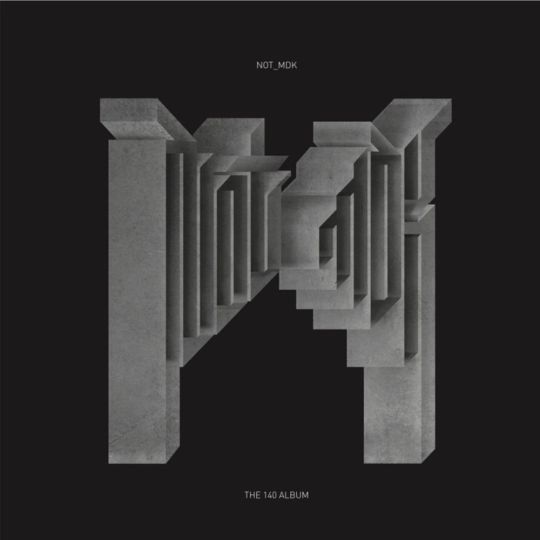
She's from Turkey but Ahu's been plugged into the London Plastic People / NTS / etc scene for years - file this with Yazmin Lacey and similar LDN soul-jazz, also it's very Boho and vibesy and incensey, definitely one to light your best candles for.
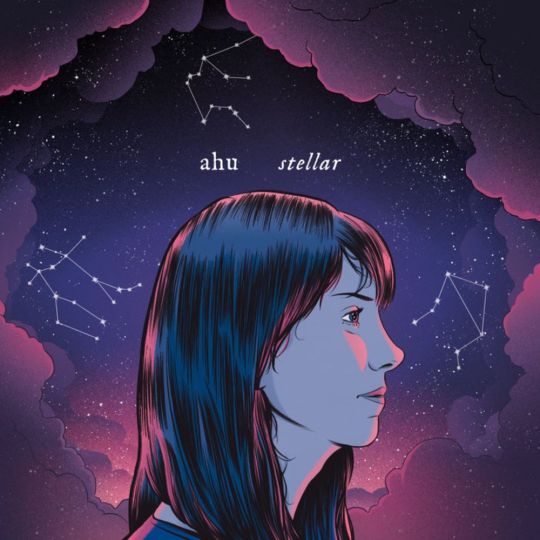
Can't remember who put me on to this, possibly Radio 3? Anyway if cold wet misty Scottish hillsides are your jam Claire M Singer has you covered - these slower-than-slowly unfolding organ-led pieces practically smell of wet moss, and are extremely beautiful.

He's lent vocals to a who's who of electronic music, but it turns out Paul St Hilaire's own studio craft is the equal of just about any of them - this is just a stunning, ocean-deep album of dub abstraction and subtly potent lyricism.
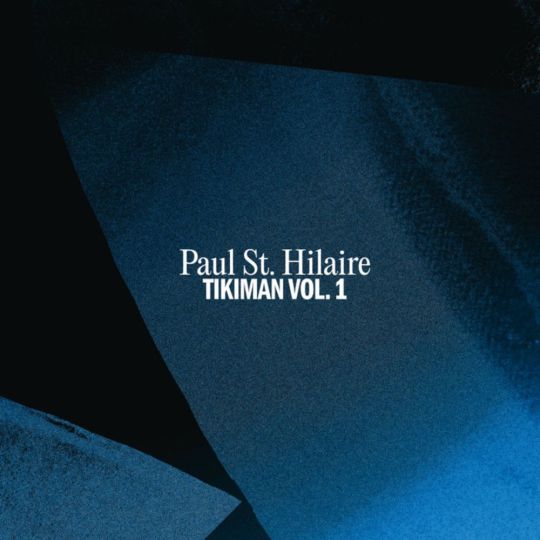
Icelander Eva Jóhannsdóttir aka EVA808 has already made a name in the dubstep/grime world but this is her really spreading her creative wings. Mad psychedelia, elemental abstraction, movie-theme composition - there's not much she can't do. Big things beckon!

There's still SO much to say about amapiano, and so much incredible UK, SA and wider world stuff last year (this isn't even the only great DJ Maphorisa album - he had THREE out in 2023, including a mini album with Shino Kikai and a 25-track one with fellow originator Kabza De Small!!). Suffice to say this has gorgeous songs, primal grooves, endlessly sophisticated mixdowns and bass that'll take your breath away.
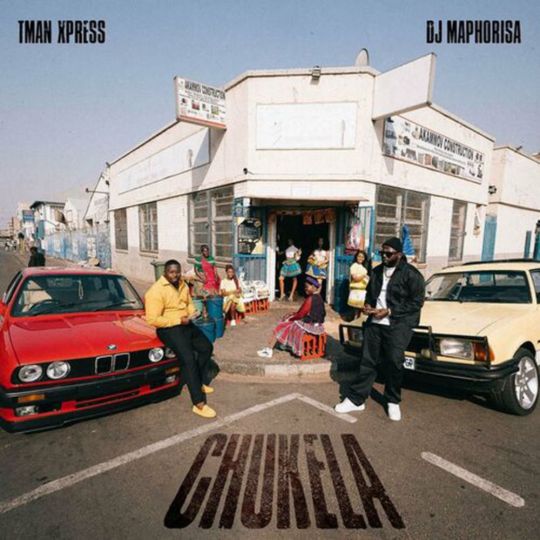
Just gonna link to my review for this one (it's got the music embedded) - but TL;DR Darren J Cunningham aka Actress is the holy prophet of the era of enshittification, yet for all that his music is constantly "off" and made for a world that is "off", he alchemises it into real gold.

Yeah I'm going to be THAT space-jazz hipster and say this is the record I wish Andre3000 (who is on it, and Carlos Niño co-produced his album) had made. It's just a more lavish, free, FUN way to cavort with the five-dimensional fractal machine elves.

Zoning in on the platonic breakbeat mathematics that underly Jersey / B'more club Chicago hip house, UK rave, trip hop etc, Bored Lord could seem arch or retro if her beats weren't so gloriously functional and bumping.

Fed up of generic records? You will never EVER find another one that sounds like IFS MA. Polish abstract slightly Autechre-y footwork / drum'n'bass with Japanese rapper MA sounding like a cyborg beat poet Taliban Trim and I.... 🤯

Every man jack and their dog are doing high bpm retro rave lately but you can trust Meemo Comma to put a fresh and uneasy twist on it. These tracks will get you proper buzzing up loud! I got to DJ for her live performance of this at Spiritland earlier in the year, hearing them on that system was a real treat.
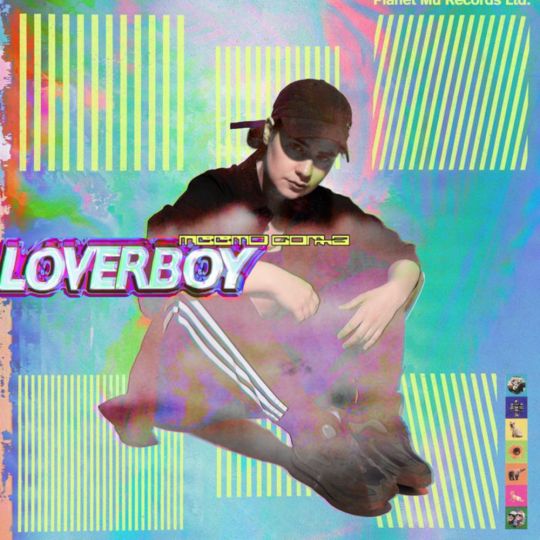
You get a twofer with this one. Phil Kieran's ode to Belfast is gorgeous in studio form here, but he also recorded and released a version with the Ulster Orchestra that single handedly revivifies the idea of electronic music done classical style!

Two true underground troupers teaming up here - Jordan GCZ from Juju & Jordash and David "Move D" Moufang with some otherworldly good-dream ambient, deep house and space-soul jams heavy on the Fender Rhodes, fuzzy reverberation and sensually sweeping portamento.

My musical safe place for so much of this year. Brooklyn "electronic jam band" Purelink somehow burrowed into electronic music history and found the softest, happiest, warmest fur lined chamber and then invited us in. I cannot emphasise enough how LOVELY this record is.

More modular synth grooves from E Ruscha aka Secret Circuits, but no over-indulgence here and the grooves REALLY DO GROOVE. Trippy as a weasel circus and twice as funky.

Talking of trippy, here's Optimo Music's second acid-drenched entry, from the man formerly known as TB Arthur and the mighty Magda trading as Blotter Trax, it's a kind of parallel universe early 80s alt disco where everything gurgles and melts.
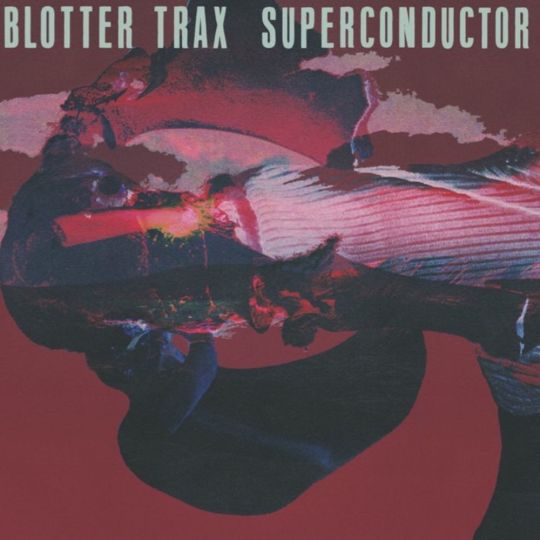
More from South Africa - King Mzaiza Sound via the reliably tough Parisian PSSNGR label - not 100% sure what you'd call this though it definitely has some gqom sonics, some trap drums, and some strident rap vocals... It's HARD AS NAILS is what it is.

EVEN HARDER - Nyege Nyege brought us a sampler of this (and I don't use mental health language lightly) FUCKING MENTAL shrieking, raging, solvent-huffing sound from São Paulo stewarded by the young DJ K, and it's extremely funky and scarily thrilling.

OK there we go, part three is here.....
#music#acid house#alt disco#dub#modular synth#psychedelia#South African music#amapiano#gqom#rap#stoner rap#hip hop#odd future#ambient#electronica#Japanese music#polish music#experimental rap#grime#drum'n'bass#footworking#deep house#breakbeat#rave#jungle#soundtrack#belfast#london#space jazz#Icelandic music
2 notes
·
View notes
Text
Albums of 2023 part 1
OK I started a best albums of 2023 thread as there's lots that got missed out of charts I contributed to. I got carried away and there's nearly 100, but they're all superb and I think there's something for everyone here. Start with this: a DEVASTATINGLY fresh drum'n'bass/jungle excursion from a perpetually underrated UK bass don Altered Natives.

A short but PERFECTLY formed 20 minutes of heavy, trippy R&B with surprise UKG and even drum'n'bass twists, Tinashe deserves so much more credit as an innovator...

I was late to this one but should've known the Hive Mind label always delivers. Swedish-based guitarist Vumbi Dekula delivering track after track of perfection like it's as easy as breathing.

I've always enjoyed Lana Del Rey when she's at her most benzo-haze - and this Mitski album hits that spot perfectly... not that it's all dissociated - it's very smart and sharp - but you can easily drift away into it.
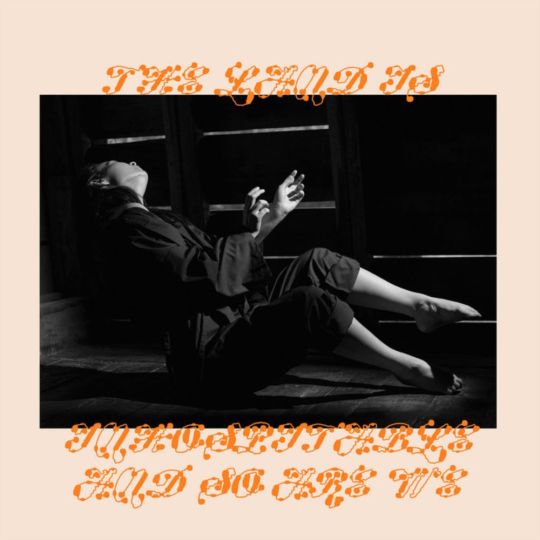
Metallica, Pink Floyd, Fleetwood Mac, Blondie covers in a millennium old Inuit language? Well yes - and in Elisapie's hands it's DEVASTATING. I played the Leonard Cohen one out at 3am in a chillout room in the summer and it was real, REAL magic.

TONN3RR3 & BIKAY3 = French live electronic beats of various flavours + EXTREMELY eccentric Congolese vocalist = braincell-scrambling funtimes...

First of two major trip-outs from Optimo Music last year - with Op:l Bastards and then K-X-P, Timo Kaukolampi is best known for motorik cosmic synth rock, but here everything is stripped away except the abstract cosmic, and wow it'll give you vertigo if you let it.

The presence of Peter Zummo here leads to automatic Arthur Russell comparisons for Greek-British brothers áthos - and it's not NOT Arthur-ish.... but more, it's operating in the same boho world of freedom as he did, and finds its own delicate voice within that.
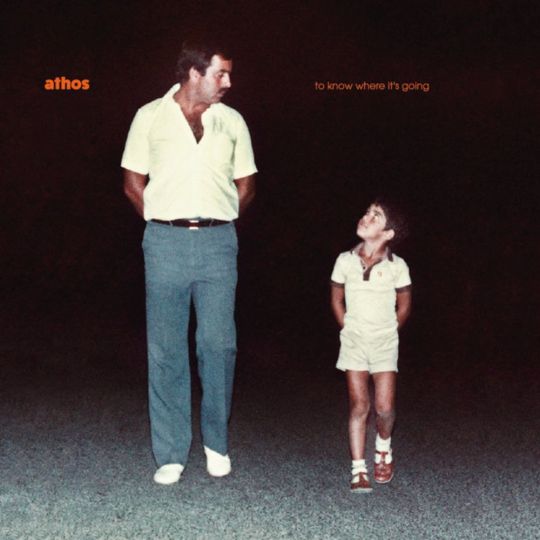
Another massively unsung talent, original Moving Shadow / - now Over/Shadow - crew, half of Mixrace with the mighty Paradox (they also had a great record out this year), Dave Trax makes THE most exquisite soulful but heavy d'n'b and this album is among his best.

Melbourne's always been musically interesting, but this new duo project from a Gorillaz / Genesis Owusu collaborator Mindy Meng Wang 王萌 with Sui Zhen is above and beyond. Sort of fourth world but more advanced (fifth world??), it's a really personal, precise and endlessly fascinating thing.
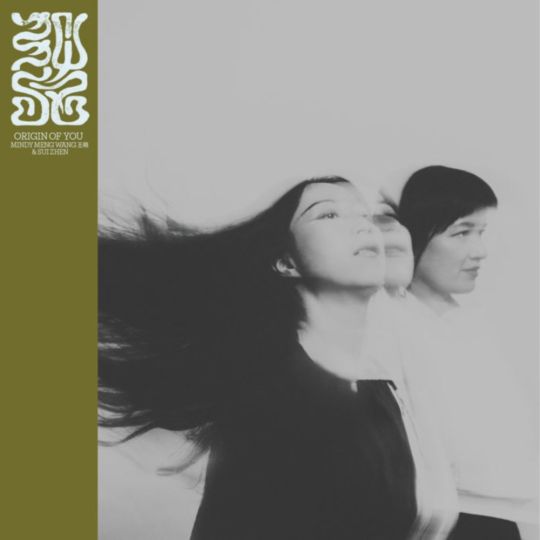
Dunno how Jamal Moss does it so prolifically but consistently: an endless flow of machine funk like a jet of magma from the centre of the earth. Add Polish saxophonist Jerzy Maczynski to the mix making Universal Harmonies & Frequencies, and the results are overwhelmingly ecstatic.

Holmer zooms into the essential something that links Mary Chain, Goldfrapp, Stereolab, Cocteaus and all their influences in turn... a kind of pure essence of motorik, psychedelic, magickal pop..... Such an instant, potent, pleasure-centres hit.

Your favourite DJ's favourite DJ's favourite DJ Jerome Hill is also no shabby producer and every one of these eight tracks is the platonic ideal of a bleeping, clonking, tweaking, hot, sweaty, bassy dancefloor banger.

Need a reminder that it hasn't all been done before in electronic music? TSVI got you covered: this is the FRESHEST gear, but never innovating for innovation's sake - always about emotions & composition first. Includes several Loraine James contributions too \(more to come from her....) ❤️

The kind of drone music that can give you superpowers if you make space to really soak it in. Kali Malone x Lucy Railton x Stephen O'Malley = AVENGERS ASSEMBLE!

The Magic Numbers pretty much passed me by, but this solo album from the band's Michele Stodart is the epitome of Soft Music For Hard Times, real quiet dignity stuff, beautiful subtlety to production/arrangment and just the kind of countrified songwriting I adore.

A second one from Hive Mind, and another supermodernist feeling one - ultra sophisticated stuff from the Rio de Janeiro polymath Ricardo Dias Gomes: is it post-rock? Indietronica? Neotropicália? Yes/no/whatever... watch out there's a noisy surprise at the end!
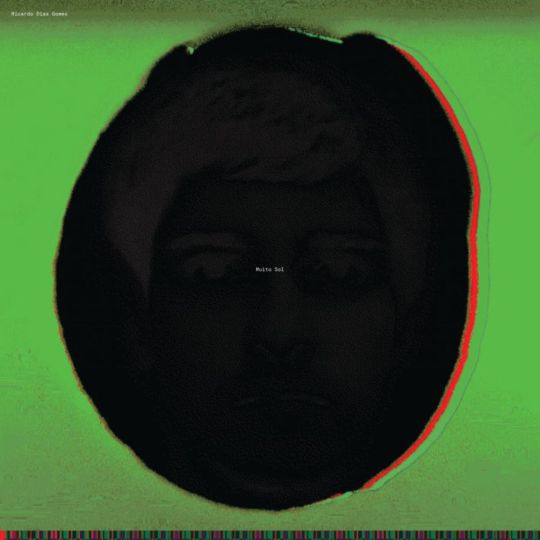
Is it me or is R&B / neo soul wayyyyy more experimental than hip hop at the moment? Like the Tinashe and Janelle albums, this is super short but WOW does Madison McFerrin pack a lot of innovation, emotion and just v.i.b.e.s. into its 27 minutes

Very cleverly structured because it starts quite timid and slight, which it turns out is maybe expectation management? But Andre Three Stacks builds into something that demands repeat plays - and a megastar bringing Don Cherry meets Hiroshi Yoshimura vibes into the world?? It's not quite the masterpiece I'd hoped for but it is GREAT.
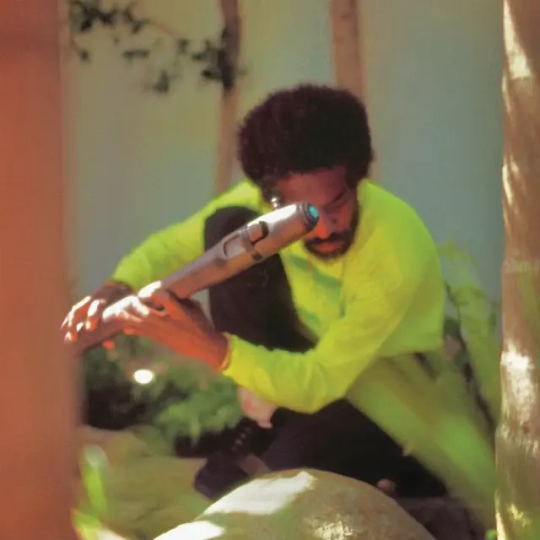
The perfect (paradoxical?) combination of being absolutely true to the unchanging groove of Detroit, but also pushing it forwards sonically... DJ Bone STILL sounds like the future.

A second appearance for the most fun abstract cellist out there, Lucy Railton - this record is really tricky, it feels different from different angles, keeps throwing surprises at you, the proverbial "a lot to unpack"... but it's GREAT.

hinako omori somehow emerges from a wellspring circa 1979-81 when prog synth meandering was feeding into e.g. Kate Bush, Eurythmics, Japan, and then traces through that into 00s post trance pop but it doesn't sound retro? HOW?

Another small but perfectly formed one. Amazing that Ultramarine's elegant, pastoral, ECM-ish house explorations are still so exploratory and moving after all these years - and they fit perfectly on the Blackford Hill label which had an extraordinary year too.

In a year when not a lot of hip hop floated my boat, this was a glorious exception. Kind of odd it didn't get more hype really - Kaytra absolutely on top of his game, partnership with Aminé flows together just like their names, guest spots on point, vibes upon vibes upon vibes (instrumental version is great too!)

David Harrow is the absolute epitome of real craftsmanship honed over years and years - and this album of dub and downtempo tracks with rich layering of singing modular synths is a really magical exercise in world-building.

OK that's that for now, direct link to Part 2 here....
#albums#best of 2023#LPs#vinyl#digital music#dance music#R&B#Rap#Hip hop#Dub#Ambient#Drone#Experimental Music#Neo Soul#Pop#Alt Pop#Indie Music#Techno#detroit techno#Jazz#Brazilian Music#Tropicalia#Bass Music#Footworking#Dubstep#Drum'n'bass#Psychedelia#Inuit Music#Cosmic Music#Congolese Music
4 notes
·
View notes
Text
Dance Your Way Home

This is my WIRE magazine review of Emma Warren's book from earlier this year....
👇🏻
Appropriately enough, this book is in constant movement. Its framework is simultaneously memoir, history and exploration of the human mind and body, and it oscillates between these modes, shifting perspective and location endlessly. In any page you’ll find multiple voices, the action flipping from Orpington to Rwanda and Stoke-on-Trent to Chicago in a moment, a zooming in and out from broad historical sweep to images of moving crowds to micro personal detail or insight.
But for all that, it keeps returning to one place: the dancefloor. And even more specifically, to long-established journalist Emma Warren’s own feet, on specific dancefloors, and to what they were doing: how her feet moved, what shoes she was wearing, what those floors were made of, how it felt. It’s hard to think of a better, or more literal, way that a complex narrative could be grounded. This book dances around, but is also firmly rooted in, the very experience of dancing.
It draws us from Warren’s parents’ youth on the English south coast, through her own childhood in Kent, student days in Manchester, working for Jockey Slut and The Face, parenthood, community organising and on. Each time we get a sense of where dance was in her life, from infant school tap and ballet, through youth club discos, funk and soul clubs, acid house, 90s superclubs, drum’n’bass, dubstep, UK funky and into the myriad of jazz-adjacent fusions of the past decade.
But every step of the way it fires off backwards in time and across continents, digging into the roots of specific dance moves and styles, the functions of dancing for social groups and movements, it’s effects on the human brain. First and second hand sources are quoted constantly – from those Warren shares specific memories with through keystone musicians and promoters to academics and scientists with insight into the dance.
In this way, it feels very similar to Jude Rogers’s The Sound of Being Human from last year, which also used memoir as a springboard to examine the science and social function of music. But where Rogers was looking the echoes and abstractions of memory, Warren keeps the focus tightly on physicality – of experiences and the building blocks of culture passed from hand to hand, body to body. And her language has a deeply satisfying physicality to match, as in “Our gestural polyphony changed the temperature, too, heating venues up with human-generated humidity.”
Despite its omnidirectional approach, this core keeps its momentum like a groove running throughout, and it really works on all its intended levels – and simply as a polemic in favour of dancing, whether in clubs, at home or professionally. Looking at subcultural evolution through the dancer’s lens – reminding us, for example that some of the most crucial dance musicians like A Guy Called Gerald and Shut Up & Dance were trained, even professional dancers – provides endless vital insights. And Warren’s phrase making provides plenty of pithy reminders of her fierce sense of purpose. “Culture matters when everything else falls away,” she says. “You can’t eat culture and it doesn’t pay the rent, but it does provide pride and history, which are useful starting points for recovery.”
2 notes
·
View notes
Text
The Local is the Local
OK this is another unfinished article. Entirely my fault this time. I wrote it as a draft for a magazine, who asked me to rejig it (entirely fairly in this case, it's a bit bitty), but life events stopped me doing the rewrite in time - and the longer it sat on my hard drive the more of a burden redoing it felt.... So I just need to dump it here, get it out there, and then develop the theme in a new way next year. Because it IS about something important to me (to all of us really), so hopefully having it out in the world will help me get my thoughts in order. Interesting sidetone: I had not heard of Cory Doctorow's concept of "enshittification" when I wrote it!

**********
To paraphrase Dickens, they were the shittest of times, they were the even shittierest of times. The litany of war, pestilence, impoverishment, looming destruction, failing institutions and all the rest really, really isn’t funny any more. Just shit. Even the lowest-information of punters notices the decline daily: not just when they need services like police or doctors or public transport, but in the very fabric of things. Even the relatively cosy market town where I live with my family – having moved out of South London to the New Forest in 2017 to give our two then-small kids space and fresh air – noticeably has crumbling building facades and a lot of shut-down shops, and the big towns are worse.
Our nearest cities are Southampton – which to be fair has never recovered from its PTSD from World War II anyway – and Bournemouth. Bournemouth, too, has always been a bit tatty – seedy too, the epitome of faded Victorian glamour – but nonetheless energetic, like the party town it is: a kind of Brighton minus the airs and graces. Lately, though, that energy is muted to say the very least. The city centre is eerie as anything with some of the biggest department and chain stores boarded up with nothing to replace them. It’s not quite a wasteland, but it’s not itself, either. It’s not right. It feels sad.
It’s easy to get angry about this stuff. It’s even easier to get down and defeated. A decade and a bit of neglect of… well…everything in the name of austerity has weakened everything, eroded the resilience needed to ride out the latest economic shocks. And the state of towns and cities doesn’t just symbolise this, they are the heart of the problem, the ebbing away of commerce and socialisation in them drives atomisation. Often it feels like too many people are beaten down, resigned, heading not towards riots but just towards a creeping anomie, distancing and acceptance of inevitable worsening of… well… everything.
There are oases of hope though – albeit slightly odd ones. Some of the best times I’ve had in Bournemouth lately have been at record fairs. Now, yes, I’m a middle aged man with decks and Kallax shelves in the garage, but honestly, this isn’t what you’re thinking. These aren’t just forums for people like me to jostle and hustle over dusty crates and bore on about rare pressings. They’re family affairs. They’re fun. The Eats’n’Beats fair takes over coffee roasters’ courtyards, with food, clothes and craft stalls. Re:Warm’s pop up shop is run by Balearic geezers, taking over a craft brewery taproom so people of all ages can eat, drink and socialise all day long around the music.
There’s two vital parts to this, the first being the food and drink. Food halls, stalls and fairs have maybe got a bad name lately, thanks to blanded out mall versions, price gouging at festivals and – worst – the gentrification spearhead affairs masterminded by hospitality industry wideboys to create bourgeois enclaves in big cities where almost all white attendees can sample safe packets of “ethnic” experience for £8 a recycled cardboard plateful. But step outside the metropoles and the picture is very different. People are thrilled by culinary variety, and very glad indeed to support local cooks and produce merchants. Food fairs are actual special occasions.
Back in late 2020, Covid still running amok, Owen Hatherley wrote a piece for the Guardian about high street regeneration focusing on how the people of Preston, Lancs took the initiative in what he called “craft beer social democracy, based on small trades doing interesting things.” My antennae sparked on reading it and I couldn’t get the phrase “craft beer social democracy” out of my head. If an arch Corbynist like Hatherley could find things to love in something so close to the Cameronian Big Society / Jamie Oliver Big Lunch model, odd things were afoot.
The second element in play is music, especially club music, and the culture that comes with it. The Balearic aspect in particular – laid back, anything-goes, not beholden to the doof-doof, but smart and interesting sounds – provides the perfect atmosphere to come-one-come-all daytime events. Even in a staid village, get a few people sitting around on haybales drinking craft cider and eating pizza, play “I’m Not in Love”, some Soul II Soul and some Róisín Murphy on nice speakers, and hey presto: vibes upon vibes. And just as importantly, the hypersocial, and now cross-generational, nature of club culture provides its own infrastructure to build on too – again, something easy to take for granted or write off as facile if you’re in a major hub city, but a lifeline if you’re out in the gammon-infested sticks. I already knew this thanks to my wife being a founder of the Big Fish Little Fish family rave organisation, and getting to see the joy it brings to relatively socially isolated parents, but seeing the same vibe connections seeping into genteel school fetes and pub gardens has been an eye-opener.
That linkage into subculture in turn links into a different sort of urban regeneration: the DIY venue. Last year, not that long after I’d made contact with the Bournemouth record fair crews, I got invited to write about the music scene in Tyneside and was bowled over by the sense of an area relatively overlooked by arts funding and the culture industry determined to build its own infrastructure. Venues like Cobalt, Star & Shadow, The Lubber Fiend and World Headquarters are created and maintained not just for their own scenes but with a sense of adding to the fabric of the city. Again, as with the Preston story, something that stood out was the "odd blend of hard-left politics and entrepreneurialism" that comes when communities pull together.
My weekend in the Northeast made me think again about other spaces I’ve attended, been in touch with or heard friends enthuse about. Sheffield’s Hope Works, a proper down and dirty techno dive that every year blossoms into the No Bounds arts festival across the city. Rye Wax in Peckham, the record-store-café-venue that’s been in suspended animation since Covid lockdown but is about to be reborn with an Arts Council funded youth mentorship programme in tow. Futtle brewery in Fife. Spit And Sawdust skate art cafe bar in Cardiff. Partisan, The Carlton Club and White Hotel in Manchester. The Golden Lion, Todmorden. The Cellar Arts Club in Worthing. Sneaky Pete’s in Edinburgh. Future Yard in Birkenhead. Club Uniquity in Somerleyton, Suffolk. Café Indie in Scunthorpe...
There are dozens more besides, crucially each with its own approach and character, a million miles from the sanitised O2 / Carling / Live Nation owned £7 plastic-glass-of-rat’s-piss monoculture that has taken hold of venues and festivals in this country. Some are built around dance music, but many around indie rock or noise/experimental music, or LGBTQ+ scenes, or all of the above. Often there’s radical politics behind them, but just as often you’ll find a hodge-podge: as in Hatherley’s “craft beer social democracy”, necessity makes for interesting alliances, and hard left and woolly libs, idealists and bootstrap entrepreneurs, rigorous ethical frameworks and widepersons of the blag economy, will rub along together.
But whatever their individual slant, they tend, crucially to have deep roots in some kind of subcultural history. At the time of writing I’m preparing to head up to Bristol to chair panel discussions at the Black Gold Vinyl Fair at Lost Horizon HQ. This gig/rave venue, cafe, gallery, marketplace and VR studio (!) is run by the team behind Shangri La – the successor to Lost Vagueness as Glastonbury Festival’s “naughty corner” – with an ethos eyeballs-deep in mischievous hippie/anarchist-leaning squatter history, but also the organisational nous that it takes to be part of the 21st century double-fenced Glastonbury megalopolis. That sense of subcultural history – folk culture, even – has been brought brightly to life just recently by the celebrations of what would have been the late, great Andrew Weatherall’s 60th birthday. They may have begun in superclub fabric, but they progressed through smaller venues in Belfast and Glasgow to close with a weekender in the strange, storied Golden Lion in Todmorden.
All of this – the food fairs, the vinyl and beer all dayers, the record shops with charcuterie, the little rave dives with coffee machines and yoga classes in the daytime, all of it – is sorely needed. The triple whammy of Brexit, Covid and the Cozzy Lizzy (as we must now call the economic collapse) have hit the music industry very, very hard, and gigs and festivals worst of all. Even international acts are finding it hard to tour and will do for the foreseeable future, which is going to be career ending for some – and for many of the tens of thousands of people who prop up the infrastructure. It’s hard to overstate the damage, but there are at least crumbs of comfort for young acts, local scenes and little venues held together with gaffer tape and deranged strength of will.
And our towns and cities need them, too. It’s been wild seeing the conspiratarians and antiwokers turn on the 15 Minute City as the latest target for spittle flecked ranting. But hopefully, maybe this can be a galvanising force for all the rest of us to remember that actually, yes, our neighbourhoods can be better. The craft beer and food court aspects may have got a bad rep as being bougie or gentrifying, but that is a misunderstanding and ultimately snobbery. Thankfully the subculture parts – whether it’s punk, rave, balearic, queer scenes or whatever – do still manage cut across class and other social boundaries. And ultimately, given the right welcoming atmosphere, having a drink or a cake and listening to tunes is pretty inclusive as activities go.
Oddly enough, there isn’t really any map to this territory, there’s no guidebook to where to find the truly independent happenings. Perhaps that’s because those big brand sponsored faux-popups, box parks and gentrifier vanguard food courts with their PR budgets suck up all the air of publicity, perhaps it’s because the indie spaces are too cranky, too individual, too busy just staying afloat to link up into a movement. They need each of us to seek them out.
We don’t really have a flagship community space in this bit of the south coast just yet – at least I don’t think we do: I’d love to be surprised and proved wrong. My exploration of our nearby cities has been cursory until recently, having had social life limited first by young children, then by two years of Covid disruption. Only now, with my kids hurtling into their teens, am I really finding my feet socially and musically. But between a few ramshackle bars and shiny breweries and those fun afternoons rifling through tunes and eating fancy cookies, I am finding a few glimmers of hope. And in these shittest of times hope is, of course, the most precious commodity of all.
2 notes
·
View notes
Text
Winging It

Thirty years ago today, one of the greatest albums of the 90s came out. I wrote about it for MOJO in 2018, including some hilarious words from the sadly missed Andrew Weatherall.
👇🏻
The album that soundtracked the end of the acid house honeymoon – for the select few that loved it – has a suitably decadent beginning.
“I was playing at a club in Rimini as part of some Balearic charabanc,” says DJ / producer Andrew Weatherall, “and at about 6am when it finished the owner opened up the back of the club onto the beach and said we'd be carrying on on his yacht. Not quite a Roman Abramovic superyacht, but sound enough – and off we went. So there I was, spangled and enjoying the view, and a young lady came up and started singing in my ear. 'I'm Dorothy Allison and I've got a band in Glasgow,' she said. Then we landed and stumbled back up the beach, terrifying the tourists.”
Her band was called Dove, a trio of Allison, Jim McKinven (formerly of Altered Images and Berlin Blondes), and Ian Carmichael (producer and occasional keyboardist for Sarah Records janglers The Orchids). They'd only released one song, “Fallen”, on Glasgow's Soma label – but that song's dub space, insinuatingly whispered vocal and harmonica lifted from a Supertramp record had captured the bittersweet mysteries of the morning after the rave better than almost any, and caused quite a stir. Weatherall, meanwhile, was on a high in every sense having – despite next to no studio experience – just marshalled Primal Scream into completing Screamadelica.
The first collaboration to come out of the yacht introduction was reworking “Fallen” for the renamed One Dove. “I was nervous!” says Carmichael. “Andy [Weatherall] came to my studio in Glasgow and I was late meeting him so he was waiting outside when I got there. I thought he'd be really pissed off, but the reviews for Screamadelica had just come out, so he was reading the papers on the doorstep and was obviously delighted.” The remix happened quickly. “It was instinctive and spontaneous,” says Carmichael “The whole time I was watching recording levels on my old Revox 1/4” bouncing into the red, and splicing lots of sections of tape together with shaking hands; it was terrifying for me. I thought the whole thing would be a mess, but when we played it back at the end and heard his version of 'Fallen' it was miraculous.”
This quickly developed into a slick working relationship, releasing on Weatherall and friends' Boys Own Productions. The three would write, send tracks to Weatherall, who brought in associates like Jah Wobble and Primal Scream's Andrew Innes for embellishment. Surprisingly rapidly given the fervid times – “I remember next to nothing of the process, I'm afraid” says Weatherall, “or indeed of those years” – it fell together into an extraordinarily coherent whole. “Every song we came up with went on the album,” says Carmichael, “we were buzzing the whole time as each one came together.” The sound blended the ambient dub of the time with a rich streak of country heartbreak (something they'd nod explicitly to by covering “Jolene” on a b-side), everything covered in sonic velvet to match the purity of Allison's softly breathed mysteries. “There were no histrionics,” says Weatherall; “it was the antidote to the wailing diva thing we'd all embraced in house music.”
It's a gorgeous, lingering dream of an album with a dark heart, and it's a perennial puzzler why it didn't sell like hot disco biscuits; after all, Boys Own now had the backing of major label London. “It's easy to blame the record label,” says Weatherall, “so let's do just that. The album came together nice and quickly – if they'd just have put it out, said 'here's a cool new band' and let them get on with it, one suspects the second album would have been where they got big.” But London kept Morning Dove White in limbo for a year, insisting on more pop mixes of the album's singles by Stephen Hague, and pushing for quick fix success. In fact those single mixes are gorgeous, but, Carmichael says “maybe they put a lot of the hardcore Weatherall fans off.” William Orbit remixed too, sonically prefiguring his work with Madonna and All Saints.
Despite promising performance from the singles, MDW didn't become the hit London wanted, and the stress took its toll. The second album – made without Weatherall – was painful, the band's relationship disintegrated, their “failure to become the new Eurythmics” led to the label shelving the album, and they split in 1996. Allison would go on to make some great solo records, working with everyone from Death In Vegas via Pete Doherty to Scott Walker. McKinven still plays and DJs in Glasgow, and has released with occasional projects including the fantastically moody electro guises Organs Of Love and WomenSaid on the connoiseur's imprint Optimo Music. Carmichael worked with trip-hoppers Lamb for some time, produced for the likes of Bis and The Pastels, and maintains an ongoing relationship with The Orchids – as well as being a director of the School of Sound Recording. MDW, a couple of b-sides and some leaked second album demos on Soundcloud remain the only remaining monument to their time together: just a glimpse of what might have been, and as such perfectly evocative of the “Transient Truth” of the pleasures and regrets of its era.
#glasgow#acid house#chillout#country and western#dub#Andrew weatherall#dot allison#balearic#classic albums#lost classics#Spotify
3 notes
·
View notes
Text
The Lonnnnng View

The brilliant Charlie Fracture just sent me his new blog post, Let's Take It Slow: The Wonders Of Slowing Down Music And The Importance Of The Long Form Listening Experience, saying "thought you might enjoy reading it". And I did, I really did. It REALLY spoke to me. I love slowing things down, I'm always doing it when DJing, as on this short mix when I took early hardcore rave and slowed it back towards the speed of the hip hop it was sampling. And I thought, hmm, I'm sure I've written about this somewhere... after a bit of head scratching and searching through old emails, I found the following article from the 2012 WIRE end of year issue. It's a bit sprawling, but it's on to something, you know... and somehow looking back over decades (as Charlie's piece does too) suits this topic. So.........
👇🏻
Off the grid
Club music's relationship to its own regularity has always been complicated, but 2012 saw these complications multiplying and the music pushing at its patterns and grids in some radical ways. While for many the story was of a retreat to the safety of familiar forms – mid-nineties house and techno in particular dominated, with a jungle revival nascent – in darker corners things were pulsing and warping, starting to ooze and waft around the steady four-square rhythm patterns that have been foundational at least since the invention of the sequencer. This was not a new genre or style in the conventional sense, rather the convergence of some key trends in 21st century music, the coming to a head of certain pressures, creating an uneasy but thrilling sense of potentiality. These are: slowness, rhythmic slippage, and a more physically expressive interaction with the digital means of production.
The tendency to slowing has been brewing for a long time but was everywhere this year. In 2012 the likes of Andy Stott, Demdike Stare, Raime, Holy Other, Old Apparatus, How To Dress Well, Lukid, Om Unit, Hype Williams and Downliners Sekt all dropped releases with rhythms so stretched that they become textural waves rather than percussion, magnified so that every surface of every sound becomes an environment. The tracks, when played on suitably sizeable speakers, are chambers into which one can enter – sometimes desolate and forbidding as with Raime, sometimes voluptuous and dangerously seductive like Holy Other, sometimes Tron-like and glossy like Om Unit, sometimes fantastical and bejewelled, as in the baroque complexity of this year’s EPs by Old Apparatus. This was “post-dubstep” not in the standard sense of simply applying dubstep's tropes to new rhythms, but in building from first principles entirely new takes on what it could have been.
Dubstep itself had an eye on those first principles, too. This was the year that the “dungeon sound” became prominent: the creepy-crawling update of the earliest half-step rhythms with added production finesse and technologically-enabled sense of detail saw the stock of originators like Distance, Tunnidge and Kryptic Minds, and newer talents like Mancunians Compa and Biome rising. It was a reminder that dubstep's original appeal was about bodily immersion and undulating push-pull physical dynamics rather than about the rave rush and the spectacle of the “drop”. Though we were reminded by the increased profile of Digital Mystikz's Coki – incredibly only now after a decade of dubstep production becoming a full-time musician and launching his own label – that even the harder end of dubstep doesn't have to be predicated on percussive impact: at the heart of even Coki's most violent tunes is always the sluggish undercurrent of his preposterously fractal, semi-liquified “scrambled egg” bass tones.
Even drum'n'bass continued a relationship with slowness. While one end of the scene intensified like commercial dubstep into hyper-pop, reaching vast new audiences, the spaced-out half-tempo “Autonomic” tendency of the last couple of years continued to develop. An album from ASC, various releases on the Space Cadets label, and most fascinatingly a terrifyingly psychedelic EP by Archer & Asanyeh on Romania's DubKraft label all turned d'n'b's velocity in on itself, creating suspenseful, gravity-loosened environments in place of demented drive. House rhythms, too, proved capable of suspending time, particular in the hadns of those re-examining the sparser strains of UK Funky and its potential to draw dubstep and Grime’s sonorities and double-time funk into a more considered space. Wen, Visionist, Beneath, Filter Dread, Shy One, DVA and Cooly G all to some degree created eerie, strangely static rhythms in this way. And throughout the underground, like an underlying pulse that influences all around it, increasingly ran samples of or references to the ‘trap’ sound of US hiphop: layered 808 kicks separated by large space through sheer necessity due to their gigantic size, and looping pitched-down vocal samples running throughout, a 21st century counterpart to the dread signals of reggae vocalists that were cut up into 1990s Jungle.
As Bristol DJ/producer Pinch put it in his Wire Invisible Jukebox interview (The Wire 346), “the way we perceive tempo and the rhythms we're most affiliated with does change, based on situations you're in and the way you tune your head to the world.” What it seems the new techniques of music creation allow is getting closer and closer to real-time manipulation of these changes, to “tune” not just the head but the whole nervous system of the listener in more and more precise ways: where the rhythmic codes of other dance rhythms may aim for the head, hips and feet, the enveloping flows and larger spaces between beats of slower music speak to the entire body as a whole. All of this is about the positioning of bodies in relation to music, allowing new ways of coming close to and entering into the music: about sculpting the affect of the sound in four dimensions. And it's technologically-enabled, the ability to zoom into the finest detail and view all the inhuman complexity of those sonic surfaces and spaces a function of just how much information is being pushed through digital signal processing (DSP) now: we are reminded in no uncertain terms that the dancefloor experience is the interface with that vertiginous information flow. As the hyper-acceleration of jungle illustrated the foaming wave of the digital future cresting as it rushed towards us, so this tendency speaks, perhaps, of it having broken and immersed us.
Rhythmic slippage is directly related to the way that slowing music makes it come in waves as much as beats or pulses. Dubstep, as mentioned, continued to prove it was about tones that undulate around and over the beat as much as the beat itself. Chicago's footworking sounds established that their determinedly tricksy rhythms were here to stay as part of the international dance language. The psychedelic hip hop of Flying Lotus and co has been elaborating on the lurch of J Dilla and the astral analogue funk of Sa-Ra for some years now, but in 2012 we saw plenty of proof in tracks like Fly-Lo's “Pretty Boy Strut”, Mark Pritchard's beats for Wiley, and the gloriously juddering melting pots of Geiom's and dÉbruit's albums, that this too is now established globally as dancefloor-rocking music, not just some over-elaborated gentrification or neo-triphop. It's no coincidence that the London club night where Kutmah, Om Unit, Kidkanevil, Blue Daisy & Offshore play these decentred beats is called “Tempo Clash”: this is, again, about grooves slithering out of expected tempo constraints, and more generally out of expected patterns.
Once again, this was about the body in relation to data: about the physicality of musical (re)production, the sampling of complex jazz playing, the hands dancing across MPC pads, the passed-down skills of the scratch DJ being applied to CDJs, touchscreens and other Ableton controllers. Whether in footworking beats or Fly-Lo's Brainfeeder imperative, it was the return of the repressed b-boy drive, a deranged scrawling of digital wildstyle lines across the weird, wired world. And again this was a tendency that had been building for some while, but in 2012 it became apparent that a convergence was taking place between tempo meltdown, rhythmic looseness and this new sense of placing of the body in relationship to the music. We begun to see – in dramatic contrast to the overtly cerebral abstractions of 1990s “IDM” – how the input-output between fleshy bodies and digital transmission systems could be made bigger, sloppier, stranger and more involving.
In this there were close parallels with The New Aesthetic – the (mainly) visual movement that coalesced in the spring of 2012 around a panel organised by British theorist James Bridle and popularised by Bruce Sterling. The New Aesthetic zooms in on the cracks in our day-to-day datasphere, glitches in normality, the sudden Turing Test fails, the moments when the comforting shields of digital culture wobble and you see the bots' myriad eyes peering out at you and assessing you. It's about revelling in ruptures between what we have naively cast as two separate worlds: the physical and the digital. The New Aesthetic – and the lurching, pulsating weirdings of electronic club music that warp and crack the regularity of sequencer patterns – are about the horror and thrill of realising that what is inside the computer and what is outside are all the same system, that we are submerged in floods of data.
It may even be that Burroughs's adage that “when you cut open the present, the future bleeds out” has some traction here: by defamiliarising the rhythms of common genres, by warping and cracking them, we may be discovering ways through the illusory impasse of the everything-available-all-at-once overwhelming by the past and present. Certainly these techniques are a way of breaking the comfort and ease that readily available sound manipulation technology – in particular the omnipresent Ableton Live – engender. Whether it's the excessively sensual surges of sound in Holy Other, the flailing iPad abuse of Gaslamp Killer or the rusted and irregular-edged grime of Filter Dread and Sd Laika, everything here can be seen as a reaction to the predictably mixed and mixable flows of the Ableton DJ generation. When precision and perfection become easier than making errors, magnifying and repeating errors suddenly seems hugely compelling.
Whether it can go further, or whether these remain just pockets of resistance, is questionable. Dance by its very nature is predicated on some degree of regularity and coherence, and the global forces of “EDM” – the all-encompassing term used since house and dubstep bizarrely gatecrashed the US mainstream at the turn of the decade – seem to increase the pressure to conformity and easily-packaged units of DJ culture. Again in The Wire, Pinch talked of wanting to emulate the freedom of tempo and metre in the Qawwali music that he has often taken inspiration from but bemoaned his lack of the “musical intelligence” of the Qawwali musicians – hinting towards an entirely new understanding of the production of rhythm that needs to be collectively built to cope with the possibilities of more flexible and expressive technology.
Dr Matt Yee-King, teacher of Computer Music at Goldsmiths college, and researcher into technological interfaces between sound, mind and information says: “musicians might start to realise that the best way to escape the grid is not to use the grid,” that is to abandon sequencers entirely in favour of all-live coding and manipulation, but it is still extraordinarily rare that club musicians and DJs feel able to break loose completely from the metronomic diktats of sequencing tools like Ableton. The grids are still in place. The slippage and melting of rhythmic and tempo constraints that have come to a head in 2012 are not a revolution in themselves, and whether one is possible is yet to be proved. Could a digital Coltrane or Hendrix, or a collective sound as improvisatory and free as Qawwali, emerge from these new opportunities, and actually become a part of the world's nightlife rituals? For the first time maybe since the peak of jungle's rhythmic fury, these extreme possibilities don't seem entirely ridiculous.
#slow music#slow it down#low and slow that is the tempo#dubstep#chopped & screwed#jungle#autonomic#dub#trap#space#irregularity#off-grid#improv#jazz
6 notes
·
View notes
Text
Brained
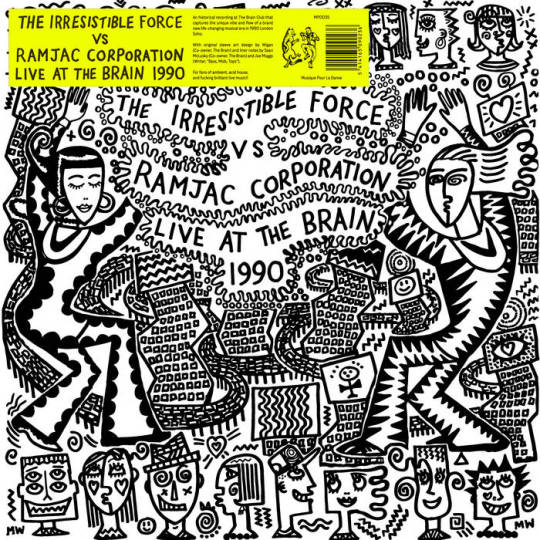
I wrote these sleeve notes. It's funny because this world was a fantasy for me at the time, I was 15 or 16 when the album was recorded, listening to John Peel and crackly reception of Kiss FM, but this music meant everything to me... Sorry it seems like a load of what I'm posting is super retro lately, and that's making me feel old, but that's just the nature of the stuff I'm digging up.
👇🏻
Back in 1991 everything flowed. There were still no boundaries between the subgenres of dance music, everything was up for grabs, parties and raves were still a total meltdown of class, race and sexuality. And old schoolfriends “Mixmaster” Morris Gould (aka The Irresistible Force) and Paul “Ramjac” Chivers had a live set that flowed together out of necessity: so limited were their samplers that they had to take turns jamming out a track while the other reloaded their sounds from floppy disc to prevent pauses in the set. But as with everything in that brave new musical world, they made a strength of limitations and produced a groove as futuristic as it was primitive. And, as the recording of their set at London’s notorious Brain club – promoted and introduced on this recording by the equally notorious Sean McCluskey – shows, they perfectly captured the sweat-drenched interzone of the dancefloor in their sounds.
Gould and Chivers had known each other since the age of eight, and both gravitated to the postpunk scene in London as teenagers. The collisions of punk attitude with world music, dub, electronics, jazz and more with the freedom afforded by squatter culture would set them both on exploratory musical paths and extremely catholic tastes. Chivers would gravitate to “real” instruments, learning Afro-Cuban percussion among other instruments, while Gould – always a technology fanatic, and working with computers in his day job – was experimenting with synths and tape edits from the start and got his first sampler around 1985. He took to DJing too, playing at gigs and private parties, soaking up lessons from the likes of Colin Faver and Coldcut in the warehouse party and alternative gay club scenes of London, and went to his first all night rave in Berlin in 1984 – so of course he was primed and ready when acid house hit big time in 1988.
For Chivers acid was a bit more of a surprise. He’d been immersed in On-U Sound style experimental dub, and was working on a live project with his Aniruddha “Dr.” Das – who would later found Asian Dub Foundation. They were using a drum machine, a TB-303 to make basslines, “and lots and lots of percussion”. One day, Chivers was tinkering with the gear in the studios of the Brent Black Music Cooperative in Dollis Hill, when a face peered round the door and said “I like what you’re doing, I’m having a party here later, if I give you £100 will you play a set?” This was acid maven Finbar O’Brien, and the party – full of 500 people, with the renowned Nick MindScape atop a ladder changing coloured gels over a spotlight by hand – and Chivers was an instant convert. More than anything it was the “fluidity” he loved, and the fact the DJ (and him) were hidden away and the crowd were reacting purely to sound, not to a performance as such.
Acid house kept Gould busy as a DJ – his own club The Madhouse was one of the first regular acid nights in London, and he manned the chillout room in Heaven among other places. He expressly set the Heaven ambient space up as a democratised counterpoint to The Orb & KLF’s “White Room” in the same space another night of the week: “Actually, it was better because their room was only for VIPs, for the elite, but I’d been reading about Prometheus, and I wanted to bring fire to the people!” Chivers was also out and about being booked as a percussionist to jam over DJ sets. And both were in demand for live sets; often playing to tens of thousands at the foundational orbital raves outside London, and really honing their skills when the Shamen set up their endlessly mutating Synergy tour, bringing on Ramjac and The Irresistible Force as residents, as well as hard industrialists turned rave converts Meat Beat Manifesto and newcomers Orbital.
It was this latter environment more than any – where DJ and live sets were all part of a continual stream of sound, and sounds, visuals and crowd were all part of the same experience – that brought together the set you hear from the Brain. You can hear Chicago and New York house in it (as well as acid trax, the pair were both devotees of the likes of Mr Fingers and Pal Joey), you can hear Yorkshire bleep and clonk, you can hear the breakbeats and big riffs that were beginning to be known as “hardcore”, you can hear Chivers’s Afro-Latin percussion training, you can hear Gould’s confidence with beatless sections, you can hear elements that would soon become integral to trance, progressive house and other subgenres but in 1991 were still part of the same flow. And most of all, you can hear that direct connection to the dancefloor that Chivers first experienced in that studio party: the sense that this isn’t a performance to a watching crowd, but the music is part of a single system with the people hearing and reacting to it.
There was a literal truth to that: the upstairs room of the Brain where live music happened on a Thursday night had no stage and held less than 50 people. The sounds that you hear flowing through this record are a document of that intimacy: you can almost feel the sweat evaporating off them, and you can hear in McLuskey’s declaration of “FUCKING BRILLIANT” at the end, not just praise of the music, but the enthusiasm of someone who’s just been through the full dance ritual. This kind of live set – genuinely created on the fly with no technological or musical rules beyond the steady beat, made to flow like a DJ set and react to the dancing crowd – would continue to have important offspring.
The kind of studio and warehouse parties that Gould and Chivers would play at, as well as Synergy and the Brain, directly gave rise to live experiences like The Drum Club & Club Dog’s Midi Circus tour (which would feature Aphex Twin, Orbital and many more), and Underworld’s Experimental Sound Field at Glastonbury 1992 with its weekend-long stream of all-live music. But it would not be long before these scenes would also generate star acts playing on stages in concert halls, and DJ culture itself would generate new idols for the audiences to face and focus their attention on too. In 1991, though, everything still flowed, and everything was still new. It’s been hard for writers and other documentarians to capture that, given that the understanding of it is dependent on duration and immersion – but impressively, amazingly, this recording manages it. Forget what you think you know about the era and its signifiers, try and absorb this as sound created in the moment, and you’re there.
4 notes
·
View notes
Text
Heavy footsteps in your attic means a spectre telepathic

Been thinking a lot about hauntological things lately, especially vis-a-vis 90s electronic music due to this compilation I reviewed. And I also did a little essay for State51's Greedmag, about the Ghost Box reissues and what it all means. The mag is sold out, so reposting the text here.
👇🏻👇🏻👇🏻👇🏻👇🏻
When the Ghost Box label arrived it seemed, appropriately enough, like an apparition. Springing out of nowhere with its perfectly realised audio, visual and phrase making aesthetic, it was an uncanny (or unheimlich as its fans loved to say) weird and wobbly echo of the British past. It melted together drizzle on the downs with Pelican books, municipal library leaflets, Ceefax, public information films, folk horror, the Radiophonic Workshop, local news segments about mummers and morrismen, trippy bits of the avant garde that got slotted into odd cracks in TV programming: things which in the mid 00s seemed so very far away in a distant, misty past. These references came, after all, from a time before websites, before rave and jungle, before lads’ mags and EasyJet: from The Old Days.
It's funny, then, listening to those first few Ghost Box releases, when they’re ticking towards two decades old themselves: steadily approaching being as old now as some of their references were when they were made. First up, very pleasingly, they still sound deeply weird. The gently disturbing folk melodies played on rudimentary retro synthesisers on Belbury Poly’s first EP and album, and the tiny disjointed collages of half-glimpsed children’s TV scenes, hippie films and rituals on The Focus Group’s Sketches and Spells retain all their power to open up little portals to parts of your mind you didn’t even know existed, to pasts you’re not sure whether you ever experienced or not. Second, and perhaps even stranger, they sound less archaic and perhaps less kitsch than when they first emerged.
There are reasons for this. First of all, it’s worth noting that, although the way it turned up fully formed with artwork, music and website all as one gesamtkunstwerk could make it seem so, Ghost Box didn’t materialise out of a vacuum. Aside from obvious contemporary allies like Broadcast and Trunk Records, the sense of a historically deep British folklore blurring into the eeriness of pre-digital-era pop culture was humming in the background already. Julian Cope’s The Modern Antiquarian had come out in 1998, its pages laid out and mock-faded to look like a 60s/70s guidebook, mysticism and mischief interwoven throughout it. Coil’s turn of the millennium output too – notably the Musick to Play in the Dark series – brought together English pastoralism, dark futurism, deep-dive psychedelia, old synthesisers and a commitment to being deeply disconcerting.
Musically you could hear precursors to Ghost Box in 90s electronica outliers like Plaid and Ultramarine, and in oddball retro ephemera collagists like Solex, Tipsy and People Like Us. And on the fringes of folktronica in the early 00s, acts like Tunng, Colleen and Neotropic were likewise using technology to open up cracks that let stranger parts of the past leak out. But looking back, now that all of this stuff is the past, maybe it’s a little bit less defined by its source material than we thought at the time. Maybe this wasn’t just about accosting the past in its weirdness and absurdity, but filtering, preserving and channelling it forwards, making sure that the chosen parts continued haunting the future?
Remember, this was a time of a very dramatic material shifting in relationship to the past. From 1999 Napster – quickly followed by AudioGalaxy, LimeWire and the rest – presented the opportunity to access a vast swather of recorded music, and what you couldn’t find there you could increasingly on specialist blogs. At the start of 2005, just before these first Ghost Box releases, the launch of YouTube marked the first creak in the opening of the floodgates for video too. Even though internet was still creaky by today’s standars, you could still discover an obscure artist and have their entire discography within hours.
All of this led to bafflement, derangement, even anxiety. Received wisdom in mainstream – and even much alternative – culture media was that this glutting would lead to a homogenisation or levelling of culture. Everything being available all at once meant there was no longer a clear distinction between populist and underground, new niche aesthetics would not be able to develop before they were assimilated, it was, perhaps, a cultural End of History. And in a sense this was true. Certainly, to the horror of inky press commentators who’d earned well from the certainties of the post-1950s definitions of youth culture and subculture, there was no “new rock’n’roll”. There was no new punk, no new acid house, no single sound that rewrote the rulebook.
Of course, change hadn’t come to a halt. The future was just increasingly, in William Gibson’s unforgettable phrase “unevenly distributed”. Cultural evolution was no longer defined by single radical paradigm shifts in a single, central pop culture, but rather moving forwards in syntagmatic shifts: the piecing together of what would become new traditions. This is the reason young people today talk in terms not of genres or scenes, but “aesthetics”. And this is where we come back to our folktronicists and hauntologists: in this everything-all-at-once deluge we needed people to coalesce aesthetics that we could cling on to.
When Belbury Poly mapped harpsichords onto analogue bass, or made audio allusions to Delia Derbyshire and John Baker, they were reinforcing connections, between fey psyche pop, cartoons, dramas, leaflets, animated geometry from 5am Open University broadcasts, in the way that synapses are strengthened during dreaming. The same when The Focus Group created micro fragments that were Polish Jazz, Italian horror, Dr Who and J Dilla all at once: this was creating a grammar of weirdness, a very specific binding together of sound, image and idea that could withstand the surge of undifferentiated information swirling around it in the outside world. These records didn’t just create sounds that still sound good now, they didn’t just set a grammar of peculiarity in motion that echoes through today via all kinds of odd internet moments and disparate creations from Scarfolk to chillwave. They also gave us a toolkit: a post-postmodern set of methods for coherently blending together the our hyperspecific special interests into new essences and letting them leak forward into the future, unleashing brand new hauntings.
2 notes
·
View notes
Text
Zooming in With Herbert

Christ, was this 17 years ago? Thinking about Herbert and his grooves because of this review I did this week sent me back to one of the first features I did for Mixmag back in 2006. It was a pleasure to do and really, really stuck with me - especially his bit when we were sitting on the beach about how much sonic information was surrounding us in the moment.
👇🏻👇🏻
In the sleepy Kent seaside town of Whitstable – more famous for oysters than techno – Matthew Herbert owns a modest but pretty old coach house. It’s sweetly rustic outside, functionally modern and open-plan inside. A couple of young mums from down the road have popped in to say hello and have a cup of tea; Herbert is yawning, stretching and saving the tunes he was up late making on his laptop-powered mini studio. Musical equipment is dotted around; it could be any moderately untidy techno fan’s house. Herbert himself – in Fred Perry and low-hanging jeans – doesn’t look at all out of the ordinary for a 30-something with a raving past. He holds up an artillery shell.
“It’s from a Tornado bomber,” he explains, “in fact this one was actually salvaged from a battlefield in Iraq, so it’s been used in a combat situation. It’s so well-constructed, some of the most precise craftsmanship around; but look…” He slides off part of the brass casing, taps it on the table and an incredibly clear tone rings out. “It makes a really beautiful sound, like a Tibetan temple bell or something. So I’ve sampled that…” He hits a key on the laptop and a chiming melody starts up, building into a spacey groove. It is indeed rather beautiful. “…I’ve taken something designed only to kill and changed its purpose completely.” Herbert might appear ordinary superficially, but it swiftly becomes obvious that his image as dance’s nutty professor is not far wrong.
Matthew Herbert’s compulsions to experiment and play with ideas have been obvious throughout his career. He started playing raves on the West Country free party scene with Aphex Twin. His albums are some of electronic music’s most experimental (but still listenable) works. He talked Dizzee Rascal into coming on stage with the Herbert Big Band of veteran jazz players, and his discography veers between brutal techno, gorgeous electronica and sexy disco. He’s turned politics into theatre and protest into weird noises; when he played with the Big Band in Syria (“I really wanted to play in the Axis Of Evil!”), the moment when they created a rhythm track by ripping up the Daily Mail drove the crowd wild with shock and delight (“they could be arrested and tortured if they ripped up their own newspaper, so this was amazing for them”), and at a solo show in Australia the ravers’ biggest reaction was when he sampled himself destroying the sponsors’ video tape that has been projecting footage behind him. His new album Scale, overflows with wonky noises and stunning songs. It contains samples of 723 different objects and instruments – from meteorites to petrol pumps to underwater drumkits – and for every last one of these, he has an explanation connecting it into his wider worldview.
Looking more closely around Herbert’s living space, it becomes clear there are quite a lot of books on odd topics like the philosophy of food or the economics of armaments. It’s a perfect, still Summer day, though, and we decide to stroll down to the quiet beach nearby. As we go Herbert points out how even though it seems almost silent that every sound we hear could tell someone about our situation, from the health of the birds singing to the types of cars to the type of building work going on – and how each of those illustrates the economics and ecology of the area to someone with an expert ear.
It should be enough to give you a headache just thinking about it, but the weirdest thing of all is that listening to him explain all this is oddly enjoyable. Like his music and political performances, it’s funny rather than preachy, and it’s obvious that he does it because he enjoys it. Of course, being Herbert, he has a detailed explanation of how he combines fun and ideas in his records. “I like to construct each album like a hotel. You can just come in and have a drink at the bar and have a good time – but if you want, you can keep coming back to explore much further.” Behind every door – every sound or rhythm – is something going on, he says. Through track titles and information on his websites he gives away “keys” that let you uncover a little more of what’s going on and understand the whole thing a little more. In a world where downloading individual tracks dominates, this is a unique way to get people listening to and thinking about a whole album.
It’d be easy to characterise Matthew Herbert, dance music philosopher (and ‘hotelier’!), as a classic outsider. As we sit down on the beach to continue our chat, though, he insists he had a “totally normal middle-class Kent childhood; I was a very sociable kid, really”. At school, however, he avidly looked for connections between things: “it would always fascinate me if, say, I found out that the dinosaur triceratops is called that because it has three horns. Straight away that animal is connected with numbers, words, history, and just about every other subject.” He was addicted to music from infancy too, picking up new instruments at a rate of knots, and devouring jazz and classical theory.
His introduction to raving came at Exeter University, where he got stuck into the West Country free party scene along with Aphex Twin, Luke Vibert, Global Communication, and experimented with his own dance tunes. The scene was separate enough to be distinctive – “no-one could afford to get to Bristol let alone London” – and held together by the legendary Mighty Force shop and label, which brought in Chicago acid tunes and released Aphex Twin and Herbert’s first records. Herbert loved the exchange of ideas at those early free raves: “council estate lads from Plymouth or Exeter who you’d expect to be out stabbing people, dancing and talking with the landed gentry who’d given up their land for parties.” Promoters would get him to play his quirky, housey tracks after sunrise, “with everyone sitting around talking and feeling really… strange!”
Herbert kept with his organic, emotive sound – often featuring his partner Dani Sicilano’s mournful vocals – through the 90s, even as the underground favoured relentless instrumental techno. Fashions have caught up with him now - the classic Around The House and Bodily Functions albums sound incredibly fresh in today’s Minimal climate – but he has kept moving on in ever-weirder and more diverse directions. For his last album, the wonky and experimental Plat Du Jour,’ Matthew had a pie baked in the UK Foreign Office, flew it over to the site of a battle in the US Civil War, and got a guy who had served in the CIA in Vietnam under Nixon to shoot up the cake with an old Nazi officer’s pistol. The various connections between the factors in the pies destruction relates to the history of international conflict and the globalised food but just as importantly Matthew points out “it seemed like fun to go to such ridiculous lengths to blow up dear old mom’s apple pie!“
Perhaps this just sounds barking mad, but it also illustrates the method at the heart of Herbert’s madness. Life is a projectfor him, a series of schemes to have fun whilst developing his ideas about the connections between things. Almost all the money he makes from the remix and film soundtrack work which increasingly comes his way (he is currently pitching for his first Hollywood movie) is ploughed into further developing his unique musical and political ideas, and into supporting his fellow maverick artists through his Accidental, Soundslike and Lifelike labels.
The dedication to investing in creating great stuff is also important throughout Herbert’s extended musical family, including the promoters of the infamous Soundslike:Werk parties in London. These parties, as well as providing some of the most twisted electronic music and raving atmosphere in the capital – held in unusual venues like old cinemas and art centres, they are proper all-night raves where live electro, techno, grime and other, weirder electronic styles run together into non-stop delerium – are run in typically ethical fashion, with profit shares meaning that international DJs playing a couple of hours don’t get paid more than barstaff who sweat it out all night. This attention to detail means that, without being all knit-your-own-hippie-party worthy, that they can provide a genuinely mental atmosphere without the shadowy presence of rip-offs and psycho promoters - “club owners are so often a certain type of person,” says Herbert, “very very motivated by profit – it’s a very pure form of capitalism nowadays.”
That sort of commitment to making the party a collective effort is something he feels was strong in the free party scene til the Criminal Justice Act of 1994 put a stranglehold on the scene, sending soundsystems abroad or into clubs. “The potential is still there,” he says, “after all, how many people are out socialising, listening to music dancing themselves wild every weekend across the world? Millions? Tens of millions? But there’s very little sense of that having a purposenow.” One of the rare occasions where he seems less than enthusiastic in conversation is talking about purpose-built ‘clubbing bars’, which he has seen more than enough of in his years of gigging and DJing: “I would happily never set foot in another bar again; they’re all starting to look like such clichés now, no beer that’s not bottled, no sandwich that’s not a ciabatta…”.
This talk reminds us that it’s getting to lunchtime. We walk with crunching footsteps back up the pebbly beach back towards where Herbert’s hefty old BMW is parked, ready to head out to a country pub to eat. The cars (he has two souped-up Beemers), he admits, are one of the contradictions in his personal politics. “They’re my real weakness,” he laughs, “obviously I’m concerned with our oil addiction and global warming, but these do at least fit with my thoughts on craftsmanship. And they are very fast.” Rebuilt and hand-tuned, these cars will last a lifetime, unlike modern cars, designed for obsolescence and riddled with so much computer technology they’re nigh-impossible to fix.
That is one of the vital parts of Herbert’s philosophy. Whether it’s cars, political ideas or music, he believes in things built to last: antidotes to the ever-hungry and wasteful culture of constant consumption that seems to dominate now. And unlike politicised rock stars – the Bonos and Stings – he doesn’t believe in preaching; rather than tell you what you should be doing he wants to lead by example, showing that the good stuff needn’t be trash, and that thinking about your place in the world needn’t be a drag or the province of hippie dreamers. “Enjoying life,” he says, “doesn’t have to make you dumb; you don’t need to compromise, in life or in music.“
Over lunch we talk about the future. Planning long-term is out of the window right now, while he works out how to promote and tour the lush intricacies of Scale – he’s busy working out how to reproduce songs recorded with a 50-piece orchestra with 3 musicians. However as he is entirely his own boss, running his own labels and planning his own gigs, he is not bound by traditional music industry timetables, and is keen to keep the touring flexible to allow for all his other activities. He is increasingly being courted by the art world and is busy planning the first of his regular columns for a highbrow art magazine. If the aforementioned Hollywood soundtrack pitch comes off, that will take up his time for a while, otherwise he will get back to researching and reading, “looking for more new ways to make sounds nobody has ever heard before”. It’s not a bad life, being a mad scientist.
#Herbert#Electronica#disco#house#experimental music#sampling#psychedelia#glitch#politics#gulf war#bmw#kent#whitstable
3 notes
·
View notes
Text
Chimes of Freedom

Three years ago I did an oral history of Orbital's "Chime" for MOJO. This is it...
Paul Hartnoll: From the age of 13 I was in school bands and local bands in Sevenoaks, usually playing guitar. Then when I was 16 and my brother was 20, about ‘84, ‘85, we started getting drum machines and what have you together. We were listening to electro, hi-NRG, Tackhead, Cabaret Voltaire, Chakk, Severed Heads. We’d turn up at local discos with a Front-242 or Dead Or Alive record, or a bunch of electro 12”s, and pester the DJ to play them. Then, when house came along in ‘86, ‘87 – the stuff like (The House Master Boyz’) House Nation and (Nitro Deluxe’s) This Brutal House - we immediately thought, Great! This is like electro and hi-NRG together!
Phil Hartnoll: I was doing an apprenticeship, so I had a bit of money, and any spare cash I’d spend on synths. I never had aspiration, I just wanted to know what synthesiser sounds were. Paul was much more driven, he wanted to be in a band. We gradually got tapes together, we’d give them to a few people, then Paul found this guy Jazzy M.
Jazzy M: My show was called The Jacking Zone, and it was the first ever proper house show on London airwaves. The stuff was already coming in from Chicago, but I wanted to hear if people could make it here in the UK - so on my radio show, I asked, Are you making music? Come and bring it to me!, bold as brass. So (Paul’s pirate DJ friend-of-a-friend) Jack Man Jay brought me this tape. It’s wondrous to think back that I had no other information but ‘Paul from Kent.’
Paul: I went up to see Jazzy in this record shop in Croydon, My Price I think; it was quite terrifying, really, because he was like a John the Baptist of house music, such an evangelist, a real character. He ran around the shop collecting all these 12”s, then went, ‘What you do is brilliant, but it’s too fast, and you need to copy these records.’ I said, I haven't got any money. He just looked at me like this was an abstract concept, and went, ‘Money? Nah, you can have them. Copy those, come back when you need some more.’ He became my mentor right up to the time when I finally gave him Chime.
Phil: The way Paul wrote Chime was very impulsive and instinctive, that non-thinking-about-it creative vibe is really captured there. Normally he’s much more the musician, the nerdy one who’ll sit down and work things out, where I’m just a Tasmanian devil - Wurrrrgh, press that, what’s this do? - so actually it was funny for him to do such an unconscious, unconsidered kind of track.
Paul: I was just trying out a way of recording where I did it all live to the four-track, without worrying about mucking about and syncing different tracks. I started about four in the afternoon, I think it was a Wednesday, a couple of hours before I went to the pub. I guess I was trying to do something a bit Detroit techno, but really, I just took some random samples from my dad’s easy listening records, put in the ‘dum dum dum du-du-dum’ bass at the beginning, job done. Right at the end I thought, What’s that weird sound? and it was the descending string bit. Sounds OK, I’ll put that in… and that was literally it.
Phil: His mates were sitting on the sofa hassling him to finish it as he did the live recording to tape! I’ll be honest, Chime never floated my boat massively because that sort of Salsa-ey rhythm didn’t really sit right with me, but I realised it really stuck out as quirky and weird, which is why it worked for us and helped as break through. And it really did go mad.
JM: He brought it into me at Vinyl Zone at the weekend, the shop was packed with DJs, I put the tape on and the whole place went spare – ‘I want it! I want it!’, thinking it was a new 12”. I was really cheeky, like, Ha ha, no you can’t have it, it’s not released! Right that minute, I went, I’m having this. I’d been working on setting up the Oh’Zone label so it felt like perfect timing, spiritual almost.
Paul: Jazzy told me to go home and re-record it, but with an extra bit at the end where it all comes back in – ‘and do it on a metal tape as well.’ I spent £3.25 on a cassette to record it on, the most expensive one I’d ever bought, and I was thinking, It’d better bloody be worth it.
JM: I’ve still got that tape, it’s a TDK MA90 with just ‘CHIME’ written on it. The brilliant thing is, that’s what we mastered the vinyl off - 12, 13 minutes whatever it is, no edits, nothing, just straight on to the Oh’Zone 12" (released in December 1989). And that was my label launched! 1,000 copies, then another 3,000, it kept getting bigger. I even played it out off the cassette too, before the vinyl. I remember it was Clink Street or one of those really grubby underground raves. The whole place went absolutely crackers. Johnny Walker was DJing there too, he worked at Polydor which was in the same building as Tong - so that’s how he got to know about it.
Pete Tong: Soon as I heard it, I had to sign it. I did the deal with Jazzy on the track, then rolled it into a bigger deal with the boys - because I knew I wanted a longer-term thing for them with (London records dance imprint) FFRR. It was a bit of a seminal moment for British homegrown electronic music; before them we had DJs going into studios with the help of engineers – S’Express, Bomb The Bass, M/A/R/R/S - learning how to make records cut-and-paste style. Then the next big wave was the talent doing everything themselves: The Prodigy, Underworld, The Chemical Brothers and Leftfield. And Orbital really set the tone for that.
Helen Mead: My first thought on getting the record was, Wait, this isn’t The Orb! And second - and this is how trendy everything had become - I thought, Oh they’re supposed to be named after orbital raves? God that’s so over. But with their live shows, they started something else. At the time I had such a battle to make people realise that there could be any link between dance music and live music, whereas I knew they interlinked.
Paul: We’d only played one show before, as The Hartnoll Brothers, amazingly supporting a local Kent go-go band. But a friend of ours (Johnny Delafons) drummed for the Shamen, and we ended up meeting them (Orbital played their first gig supporting The Shamen at the Islington Town & Country Club 2, February 1990)
Mixmaster Morris: Doing the Synergy tour with The Shamen was their first proper live gig. I took them out to buy sequencers to make it easier to do the live sets, and the first time I ever heard them play was their first soundcheck. Everything was moving so fast in 1990, and I’ll always associate Chime with that. It was in the charts as we were touring, so it just got more and more popular, everyone got more and more crazy. The Shamen weren’t in the charts at that point, they didn’t have a hit ‘til 91, so Orbital got bigger than everyone else on the tour. They were still only getting £10-15 a night like the rest of us, mind.
Phil: When we did Chime on Top of the Pops (on March 22, 1990), we were a square peg in a round hole. We were so awkward standing there trying to mime - we thought we were being all clever having everything unplugged. Ugh, it was pretty painful. We had a big argument with them asking why we couldn’t play live, but at the end of the day you can’t refuse Top of the Pops! Then of course we had Snap! on afterwards doing, “I Got The Power!” and they just showed us up even more.
Paul: Between us, 808 State, The Shamen and their mates, it really felt like the beginning of something, of people deciding they didn’t like the old nightclub regime and wanted something new. From there we got involved with (crusty tribal rave promoters) the Megadog lot. It was very word of mouth, it was really about being evangelical for this culture. Very different to all the Sunrise and Energy raves which we’d play - they were run by blaggers who were only in it for the money, and they would run things very shoddily.
PT: They were very much in tune with the free parties, the traveller mentality, the DIY mentality. And they presented themselves as a band from the start. Them, The Shamen, The KLF, I think they showed the way. To this day, I tell producers starting out, If you want to be seen as a band, you’ve got to act like it, not just another DJ making a record.
Phil: Playing it live was where the magic came in for me. It was so simple, just a few samples, the 303 - which was my little baby to mess around with - and couple of other analogue synths, it was really easy to jam it out. You can hear how much we’d go off on one with it on Son Of Chime (released on the Live At The Brain album, 1990). Sometime around this we went up to Liverpool, that guy James Barton who started Cream asked us to do a private do for him and his mates, about 100 people. As soon as we’d played it, they’d go, Play Chime again, play Chime again! We must’ve played it for half an hour, maybe more.
MM: They played Synergy shows all through 1990, and we were doing underground parties at the same time - the whole point of those was to do an all-night party with no DJs, only live electronic music. A classic one was at a rehearsal studio in Willesden - maybe 1,000, 1,500 people, well overcrowded - which kickstarted (touring Megadog rave event) the MIDI Circus and was a precursor to Experimental Sound Field in Glastonbury in 1992, where Underworld, Orbital and everyone played for the whole weekend.
HM: It was probably 1993 before people realised how big this whole scene had become: that’s when you had Aphex Twin, Sabres of Paradise, Leftfield, all coming through. So Chime was big, but I don’t think anyone knew how big it was all about to get.
Paul: I could never get sick of hearing Chime. Aside from just being proud of it, it’s given me my entire life of doing music. How could I ever not get a thrill from that?
2 notes
·
View notes
Text
Postmodern Moralists
Apropos of writing my first book review in ages (for next month's WIRE), I got nostalgic for the time when I did quite a few for the sadly missed The Word, the magazine. Here's one from 2012.


100
Bill Drummond
Penkiln Burn
I Must Not Think Bad Thoughts: Drive-by Essays on American Dread, American Dreams
Mark Dery
University of Minnesota Press
Subversive thinkers rampage through 21st century life, perturb deeply.
In 1975 the 22-year-old Bill Drummond, then a set-builder in a Liverpool theatre, spent an evening working with Ralph Steadman on set designs and listening eagerly to his Hunter S Thompson anecdotes. One in particular stuck with him – a story of Thompson and Steadman undercover of night painting “FUCK THE POPE” in gigantic letters on a ship, which then sailed down the Hudson river behind the Pope and mayor of New York live on primetime TV. Spectacularly crass, and – it transpires – almost certainly untrue, but the scale of the supposed prank clearly had a powerful and lasting influence on the man who would machine gun the Brit awards and take Tammy Wynette to the top of the charts in an ice cream van.
In 100, Drummond answers 100 questions about his life and work from 25 interlocutors in language so sternly understated it would – if he weren't so reluctant to self-identify as a “Scottish artist” – be tempting to describe it as Presbyterian. He looks back over Quixotic missions and arrogant mischief – from looking deep into the heart of Haiti to trying to hunting Abba – always with a cool eye, puncturing his own pretensions and admitting his inconsistencies. Clearly, though, the love of provocation and blunt urge to tip up tables is still there as powerfully as it was in that impressionable youth or in the KLF years.
His subject matter is often prosaic, with an underlying rejection of the modern: recurring motifs include woodworking tools, white emulsion, Creedence Clearwater Revival, untrained people singing together. But he uses and clearly understands technology, and his meditations on downloading and copyright, and on how Goebbels would have used the internet, provide as much to get your teeth into as those by any zippy young tech guru. Drummond mistrusts almost everything – language, culture, the art establishment, recorded music, his own ideas – but his desire to tug at each thought or assumption, to test its strength, leads him into the most glorious trouble, and to ask questions that very sorely need asking.
Mark Dery is another outsider thinker, but one with a furiously different approach to Drummond's deadpan, sidelong observations. A punk by inclination, an academic by trade, he runs headlong into every topic, picking fights, firing off linguistic zingers in all directions, creating a vivid vision of 21st century life. In his world, the blogosphere is “this dictatorship of the commentariat... this grotesque hypertrophy of the chattering class”, his own stepfather is “Conan the Vulgarian” and his favourite Queen song (“The Fairy Feller's Master-Stroke” since you ask) features “laser-sharp harmonies by robo-seraphim, heavy-breathing, glam-metal harpsichord that sounds like Scarlatti shtupping Liberace... and to top things off, a gong.”
Looking at the image of the undead in pop culture, he races from contextualising Marx's vampiric capitalists within the Victorian Gothic to holding a magnifying glass to US survivalists' addiction to the zombie apocalypse trope. He outs HAL9000 in 2001 as gay in a discussion of Alan Turing and artificial intelligence, and punctures Lady Gaga's pretensions to transgression (albeit, in a rare misfire, missing the point of repetition in dance music along the way).
Behind the firework display of wit and way-outness, though, there is an analytical mind as calmly, insistently enquiring as Drummond's: Dery's topic is always the American psyche, with all its militarism, machismo and pornographic greed, and he illuminates it with equal measures of love and despair. Running through his hallucinatory menagerie of jock politicians, self-help gurus, Star Trek slash fiction, rappers' dentistry, Santa Claus conspiracies, stoner noir, zombies, guns and “buck-hungry retailers of the unspeakable” is a thread of cool-headed analysis and disciplined questioning.
Like Drummond, Dery invokes Hunter S Thompson, but in his case it's not as a prankster, it's as a stylist of language and gimlet-eyed political satirist in a tradition that runs from Swift through Twain and implicitly on to Dery himself. He's not arrogant to place himself in this line, mind - but however outlandish, his observations are unerringly aimed, almost always ring true, and even when they don't they're not easily dismissed. Both he and Drummond, despite their refusal to preach, are moralists in the best sense. They don't look at the modern world in search of the flip headache-cure answers of the Malcom Gladwell school of guru-ism lite, but accept its madness and even revel in it. As the good doctor himself once said, “when the going gets weird, the weird turn pro” - and in this deeply weird, wired world we need more professionals like these two.
#books#satire#analysis#social commentary#postmodern life#mark dery#bill drummond#klf#outsiders#essays
8 notes
·
View notes
Text
ESCAPE THE CRINGE


I first wrote this piece for an art mag at the start of the year but they dicked me about over rewrites so much - and I mean really dicking about, like radio silence for three weeks then suddenly demanding changes for the next day - that for the first time in my life I actually pulled a piece. A couple of other outlets were up for it, but needed further alteration to fit house style... With so much going on I let it slide and let it slide, and now it's been so long I just feel like shoving it out there. It still feels relevant (maybe more so now that we're seeing an increasing public collapse of some of the most high profile demagogue scammers, albeit with new hydra heads quickly replacing them), and I'd rather have people see it and maybe feed back, rather than wrangle over it any further. So without further preamble, here's some thoughts about one of the defining reactions of our time and how to get away from it.
👇🏻👇🏻👇🏻
We live in a time when groupthink and echo chambers are everywhere, where ingroup radicalisation, cult-like behaviours and submission to scammers and demagogues seem to be defining patterns of the era. Blame for these things is often laid at the feet of algorithms, of politicians, of capital - in many cases rightly so - but we all individually play the game too. We build the walls of our own cultural gated communities, with tweets and artworks and individual choices about where to go and what to say, and the more we do so the more those spaces that we force ourselves – and others – into become more or less gilded prisons. We all think we’re hip to something, and end up orbiting that something endlessly.
The first rule of hip club is you don’t talk about hip club. That is: if you’re serious about your aesthetic nowadays, you do your very best to not acknowledge that it even is an aesthetic – let alone identify its rules and delineations. Now, of course this doesn’t go for everyone: there are still anime cosplayers, emo kids and others who still gauchely adhere to the overt “style tribe” late 20th century ways of belonging. But these are exceptions that prove the rule. Far more often the things that make us “us”, that hold us together, are still based on taste - but these tastes that provide us with a sense of belonging are signalled covertly. They’re signalled not by discussing, or even necessarily knowing, what preferences make you belong among Your People, but rigidly enforcing the ingroup-outgroup divide with reactions against The Others’ tastes: through a set of real or figurative winces, grimaces and cringes.
Oh yes, the cringe. That most visceral response, often deployed simply as a single word sentence by the Terminally Online, the argument ender to end all argument enders: just “cringe”. It’s noun, verb and adjective all rolled together into a gut level rejection, and it’s a dead giveaway that so, so many parts of The Discourse - as people solipsistically have it - is based way more on aesthetics than it is on any kind of coherent set of positions. That is, it’s less about showing revulsion at ideas, than about the fact that they’re expressed gauchely or clumsily or simply with the wrong slang. It’s a social cue, a nod to one’s fellows, to acknowledge shared good taste in memes, phrases and cadences, which one’s interlocutor has unforgivably failed to engage properly with.
This kind of of us-and-them cringe-signalling operates in various ways across society, but perhaps the most fundamental dichotomy is basic vs hip, or normie vs hip. This in itself is framed in a variety of ways, but a super simplified version might run like this: influencer culture, sincere slogans, Will Ferrell and The Office memes, Goop wellness, "Fiat 500 Twitter" on one side - and shitposting, pursuit of the latest zero-caps punctuational microvariant, everything intellectualised but ironised, the moods formerly known as “based” and "dank" on the other. The former sees the latter as smug, pretentious, nonsensical, messy while in the other direction the hip cast the basics as conservative, simplistic, unimaginative, conformist. Each cringes at the other, each considers the other fundamentally in bad taste.
And these dichotomies are held in place firmly by the material interests of vested powers. So to keep with our sample duality, on the basic side, there are the affirmatory or aspirational solution-havers, the Matt Haigs and Johann Haris, Rupi Kaurs and Molly Maes, while on the hip side there’s the Somethingawful-to-Vice-to-Broadsheet ironymonger pipeline and the Politics Podcast Industrial Complex embodied in people called things like “PissPigGrandad”. Each relies on hate and fear of the other to provide a steady stream of attention and income to those who shore up their own self-image, who normalise an way of being, who provide just enough answers to make people feel like they’re on the right track, but not so many that they won’t keep coming back for more. Yet each is, of course, built on a lie.
The basic think they are commonsensical and unpretentious, but actually adhere to byzantine aesthetic and political codes of belonging. The hip think they are switched on, fast moving and progressive but in fact their gatekeeping is deeply conservative: the solipsism of believing an echo chamber is “The Discourse”, no matter how ironically you try to couch that, is all about normalising enormously limited race, age, nationality and class boundaries around what is acceptable. Both are co-dependent false divisions of ideas and people made to shore up power structures and the interests of the privileged, and both are built on aesthetics above all else. Each is, in its own way, an insistence of good taste.
Once you see this, you see it everywhere. There are so many versions of this mutually exclusionary duality. Sometimes they’ll manifest as ostensible generational, regional or professional divides, sometimes as scene or faction schisms (and note well, political factions have more in common with musical, fashion or social scenes than anyone within them would ever care to admit). Each time, if you look, you’ll find that they are defined more by aesthetics than ethics: by those assemblages of catchphrases, by certain quirks of timing and emphasis. Whether it’s Dawkins and Harris quoting facts-and-reason guys defining themselves against what they think of as a feminised, emotion-driven mushiness in the barbaric masses, or underground music fans against the flash and spectacle of EDM, or vintage specs wearing postgrad ketamine-leftist cliques against “shitlib centrists”, or crypto-bros against anyone who doesn’t have a wallet, all too often the sense of self is generated by what one is NOT.
And each time if you dig into what is happening in these oppositions, you’ll find someone benefitting in real, material terms: spokespeople, figureheads, demagogues, people whose theories or slogans are rallying points for believers and who rely on those believers for speaking engagements, podcast and newsletter subscriptions, NFT sales, academic tenure, political appointments, newspaper columns. There is a whole egosystem of commentariat and metacommentariat whose job appears to make bogeymen of one another, yet who one all too often finds in the upper echelons are on perfectly friendly terms when they run into one another in green rooms of media recordings, backstage at literary festivals or in the offices of the agents that they share. This last location not picked idly, n.b.: one of the UK’s loudest hip-left commentators of the past decade shares a literary agent with a leading hip-right provocateur and an old-school hard-right rabble rouser: they are very literally all in it together.
All of this, it really bears repeating, is built on lies, and further, is built on consciously or unconsciously deliberate obscuring of the truth, in order to support these power structures. If ever you see an argument that’s built around one of these abstracted dualities - pop vs underground, modernist vs traditional, respectable vs transgressive, health vs pleasure, decadence vs morality, rationalism vs “the blob”, take your pick - you can be sure that not only is there someone making cultural or actual capital out of it, but that they are muddying waters to make it more difficult to make out the connections, genealogies and human realities underlying what is being discussed. An appeal to take a side in one of these, ultimately aesthetic, judgements – an appeal to show good taste – is an appeal to feel the cringe instead of analysing what one is cringing at. It’s an appeal against scholarship.
Which is why we must, with extreme prejudice, abolish the concept of good taste. “In principle,” said the DJ and dance music producer Chrissy in 2020, “I think the idea of good taste is classist and racist! Usually whatever's considered good taste is what the most powerful or most educated or wealthiest people feel comfortable yelling about, and the ones out of them that can yell loudest and most eloquently about it, as a society we call that good taste.” And he is entirely right. No matter how you define “good taste”, you are defining it as a power relation, an exclusionary tool, a way to deride.
Which is not to say that taste and discernment don’t and shouldn’t exist – but they exist in the sense that scholarship exists. Not ivory tower, status-accrued-by-citations scholarship, but scholarship as in demonstration of knowledge accumulated and the practice of accumulating it. The kind of scholarship that’s as likely – or perhaps more likely – to be exhibited by autodidacts as celebrity professors. You can’t judge scholarship according to winces, grimaces and cringes, you have to take it on according to what it is actually saying about its subjects and objects: and so with taste. Someone’s taste should impress precisely to the degree that they demonstrate that they know and care about the objects of their affection, not for its adherence to a social code imposed by vested interests.
Maybe there are reasons to hope. The early years of this century were formed by information glut, by seemingly all of cultural history being available all at once. Many thought this would lead to cultural paralysis, a dissipation into undifferentiated “conent”, and a death of innovation – and certainly it can be seen to have driven a retreat into reactive and reactionary positions. When bold statement of preference and belonging is made difficult by the baffling array of choice, covertly coded taste bubbles are an inevitable outcome. But two things abode.
Firstly, those genuine old-school style tribes, from cosplayers to grime lovers, who grew up together over years, put in the time together, and truly and positively identified with what they do, and the real spatio-temporal existence of what they do, in defiance of the grimaces of others. Second, the rise in value of curation. It’s a word often derided because of its ubiquity in marketing speech, and mocked because “everyone’s a curator” (or “everyone’s a DJ”) nowadays. But curation at its best is precisely the kind of pride in scholarship and individual ability to map connections across the information ocean, that can short circuit the demands of good taste.
It’s available to all, it can be expressed easily – as punks did with paper fanzines and grime lovers with phone-shot video – and it is by its nature collaborative, sharing, and dependent on positive choices. There ARE glimmers of hope that Generation Z are more able to think in a curatorial way than their predecessors, to cut and paste the always-on data glut of past culture into something more actively expressed than reactively defined – something that can engender a sense of belonging without the need for those gut level micro-rejections of The Other to define itself. And if that is the case, then maybe, just maybe, they can demonstrate new ways to escape the cringe.
#cringe#culture#curation#ingroup#clique#politics#clan#family#echo chamber#aesthetics#good taste#hegemony
7 notes
·
View notes
Text
30 Years of Headmelt
Aphex Twin's debut album Selected Ambient Works 85-92 was released 30 years ago today. Below is the appreciation I wrote for FACT mag when it was declared no.1 best album of the 1990s back in... 2012 or so? I guess, but the 20 years reference anyway? Some of the reference points are very, uh, of their time but I stand by the general gist of it.
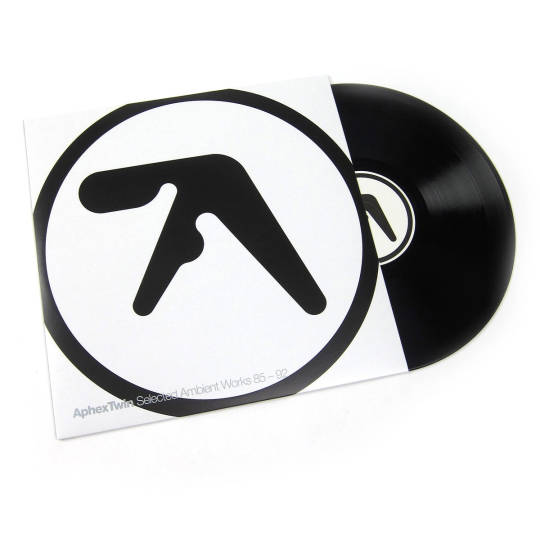
Original is here: https://www.factmag.com/2012/09/03/the-100-best-albums-of-the-1990s-100-81/
Very early on, I think before this album even, I remember reading an NME review of an Aphex Twin release that described his sound as “very ancient and very futuristic at the same time.” And really, I’ve yet to see a better summation of the appeal of Richard D. James’s best work. Listening back to Selected Ambient Works 85-92 now, just as then, it feels way ahead of its time, able to do things that producers with far more sophisticated technology are still struggling to grasp – but also like it has been around for ever, as if you could blow the dust away and have revealed the geometries of a whole other civilisation.
That “dust” is vital to how this music works. We think of Burial or Tri Angle releases as being new, but RDJ was performing the same tricks with mist and shadows 20 years ago: everything is drenched in reverb and hiss, obscuring and blending, forcing the imagination to work. It was said of Debussy that he was able to turn the piano from a mechanism with 88 hammers, each producing a separate note, into his own personal orchestra from which great waves of sound and melody emerged – and this is the trick RDJ manages too. Whether on the soft and melodic tracks drenched in the hiss of the cassette tapes on which they were recorded live, or on the hyper-real clarity of the belches and blurts of the pool of acid lava that is the album’s centrepiece ‘Green Calx’, everything flows into everything else. Everything is a part of a whole, not just because of the dust and blurring, but because every chord, every rhythm, every unwinding melody is locked into every other part with uncanny rightness.
It’s a psychedelic record in the truest sense, alarmingly evocative of acid’s synaesthesic and glossolalic qualities, full of the ecstasies of floating free and the terrors of complete disconnect from reality. The thought of the number of serious sessions it must have soundtracked over the years in itself fries the brain – but like other great drug music – from Sgt Pepper to Sly Stone, Chris & Cosey to Gaslamp Killer – it doesn’t require drugs. It also, far from being “ambient” in the true sense, has both feet on the dancefloor, extraordinarily heavy bass throughout, and a surprising understanding of black American music given how white and geeky its legacy has been seen as being. Listen now to ‘Pulsewidth’, ‘Ptolemy’ and ‘Delphinium’ and you hear a teenager from Cornwall who has managed to grasp the mechanisms of Todd Terry, Jamie Principle, Derrick May, Larry Heard and co better than almost anyone else in Britain bar A Guy Called Gerald. In short, for all its mindmelt and harmonic sophistication, it grooves like a mother.
Every so often through the album, the spell is broken for a second when you hear an element in the track faded in or out a little roughly and realise someone is actually mixing the track live – but this in fact makes the magic more powerful. It’s these moments when you realise this was made in a bedroom with jerry-rigged keyboards, solder and cable, and hands shoving faders up and down as the tracks are recorded live to tape, rather than gigabytes’ worth of processing power, that its singularity becomes even more boggling. But then each time the gaps in the scenery close up as quickly as they opened and you’re swept back away from the reality of circuitboards and gaffer tape, and back into the high cosmic drama of the sound and melody, where scale is always uncertain and time is elastic. Because this album’s appeal then and now is not about technique or cultural reference points, it’s about getting swept up in those waves of sound and melody that keep on coming and are still a pleasure to have wash over you, 20 years on.
#aphex twin#selected ambient works 85 92#r&s records#techno#electronica#ambient#rave#blissout#tripout#wigout#spaceout#chillout
3 notes
·
View notes
